Few people have spent as much time in the clouds of Pikes Peak as our very own Larry Chen. He and Mario Christou caught up for a chat to discuss the infamous race, and give you some insight from Larry’s experience:
MC: I’ll just put it out there: Pikes Peak is a mythical event to car enthusiasts, and pretty much everything about it has already been documented, right? I mean it’s a 109-year-old race. You’ve covered it for a while though?
LC: Yeah, I mean I started shooting the hill climb back in 2011, which happened to be the last year where part of the course was still dirt. There were construction and paving markers all along the road, and we all knew that as soon as the event wrapped up that year, the dirt section would be gone forever.
That change transformed the race, opening the door for all sorts of different cars. Overnight, it went from a mixed-surface challenge to a fully paved event.
MC: The action completely changed, at least it felt like it watching online at home. Going from clips such as the Peugeot 405 T16 sliding its way up the hill to Sebastian Loeb’s 208 T16 clipping apexes, the vibe was totally different.
What changed about Pikes Peak for you as a photographer though?
LC: In 2017, I became the official photographer for the Pikes Peak International Hill Climb – a role I take very seriously. I hope future generations look back at my photos to understand what the event was like during this era, just as I study the images from the past 100+ years.
MC: On that note, what is it about Pikes Peak that’s so different from European hillclimbs? I mean, we’ve got plenty across the UK, France and Germany.
LC: The biggest difference is the sheer length and elevation gain. Drivers pass through multiple climate zones on their way to the summit. Above the tree line – around 12,000 feet – there’s almost nothing but bare rock and thin air. No other race course in the world looks like Pikes Peak in that sense.
MC: So how does it compare to shooting a typical motorsport event?
LC: Everything becomes harder when you combine the elevation, long distances, thin air, and limited communication. It’s a physical and mental grind just to make it through the week.
We’re up in the middle of the night for four straight days (five including race day), shooting in freezing conditions until the sun finally breaks over the horizon. But the moment that golden light hits the mountain, I forget all about the discomfort – it’s worth every second.
MC: Aside from the freezing cold, lack of air and gorgeous sunrise over the mountain, what’s the most memorable thing about Pikes Peak to you?
LC: That’s tough. I’ve had countless unforgettable moments on the mountain. If I had to pick one, it would be the shot that’s probably my most recognised photo ever: Ken Block drifting EVO Corner in the 1,400-horsepower Ford Mustang Hoonicorn V2, during the filming of Climbkhana. It’s hard to imagine topping that, though I’d love to be proven wrong someday.
MC: How did Pikes Peak 2025 compare to previous years then?
LC: This year was one of my favourites. I had a fantastic team behind me, pushing the limits of what’s possible in Pikes Peak photography.
We tried something new for our video coverage, too. Rather than focusing solely on my personal experience and struggles throughout the week, I encouraged everyone on the team to document their own experiences too. They work just as hard as I do.
LC: It’s a longer, more immersive video than my previous Pikes Peak coverage. Give it a watch!

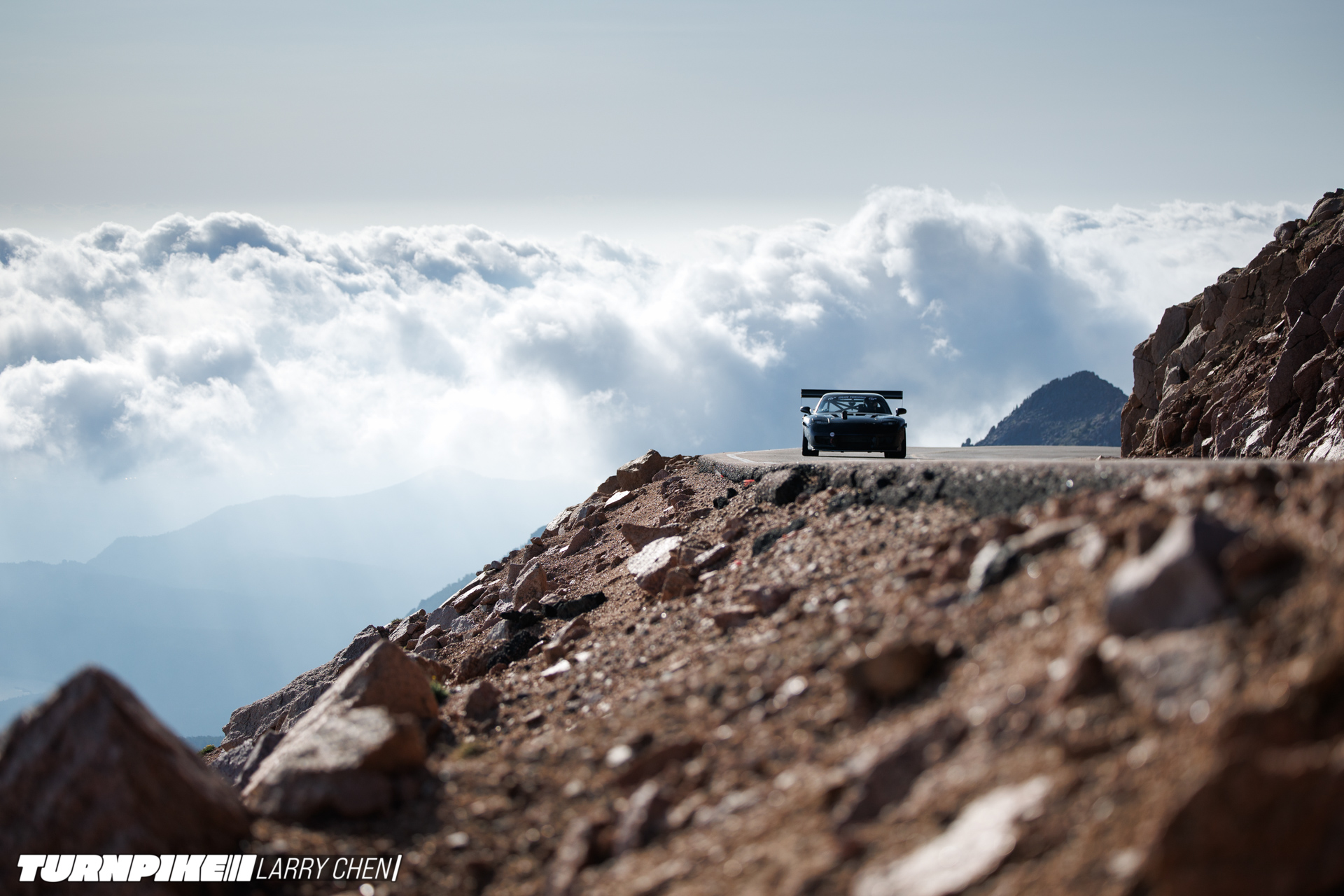
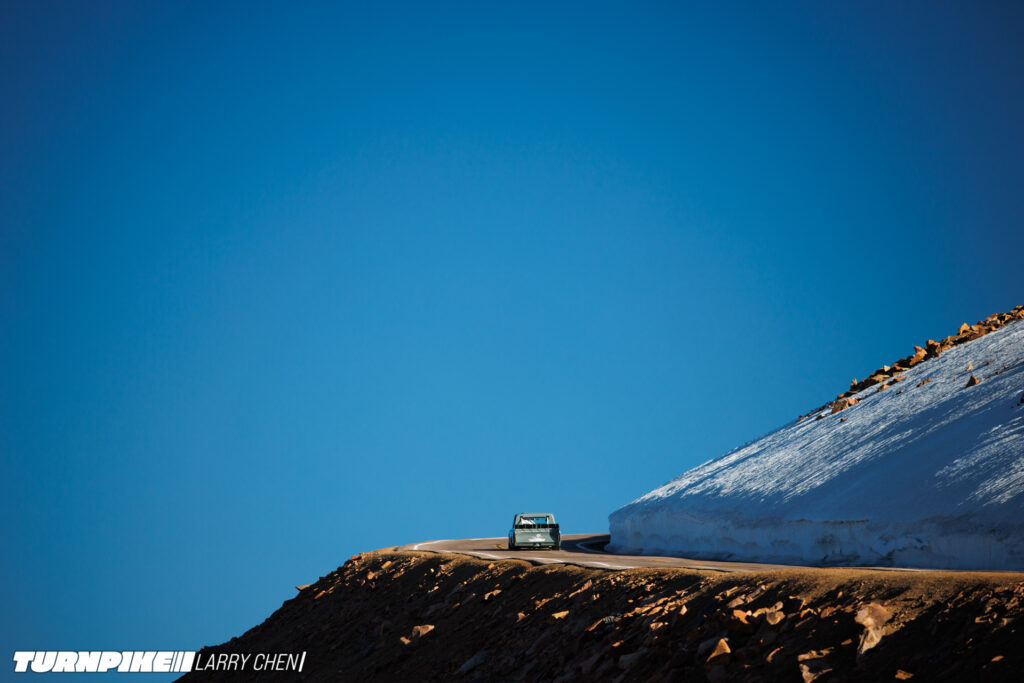
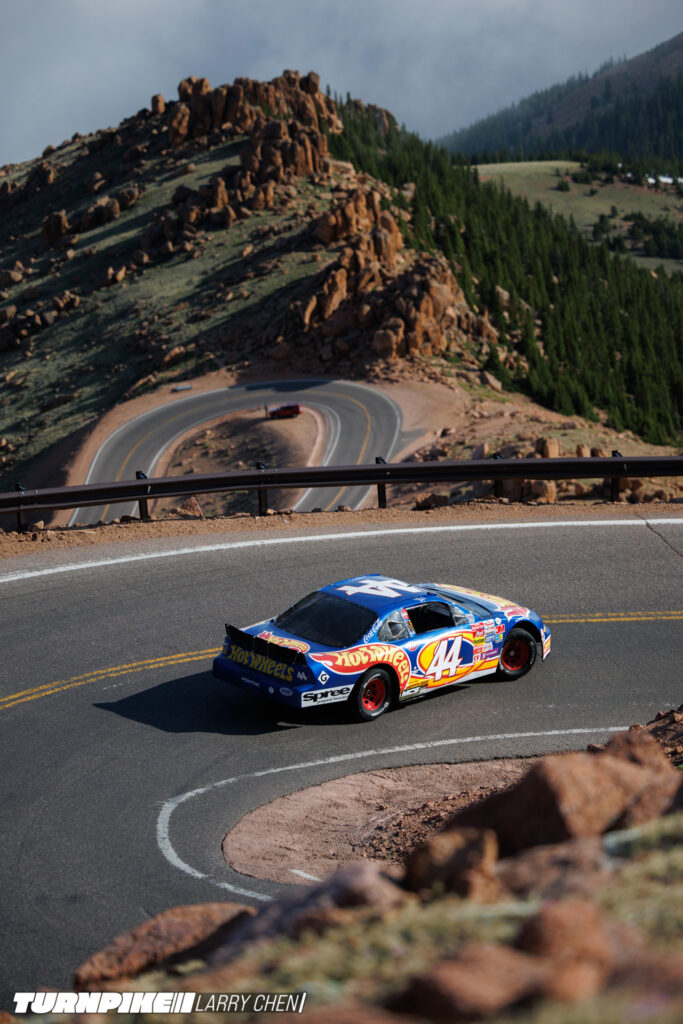
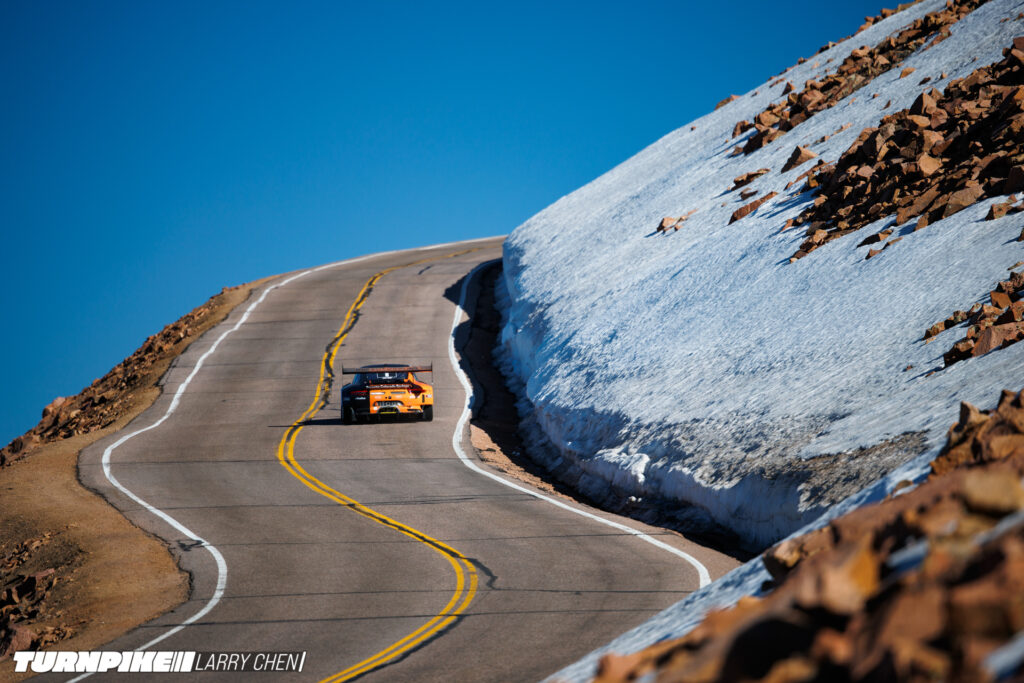
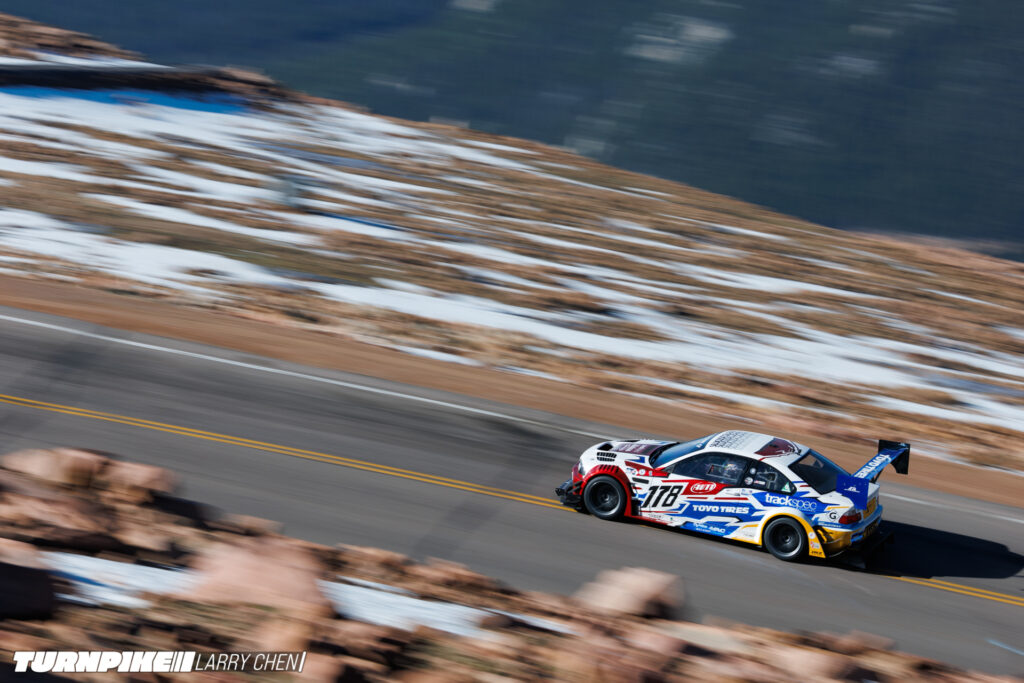
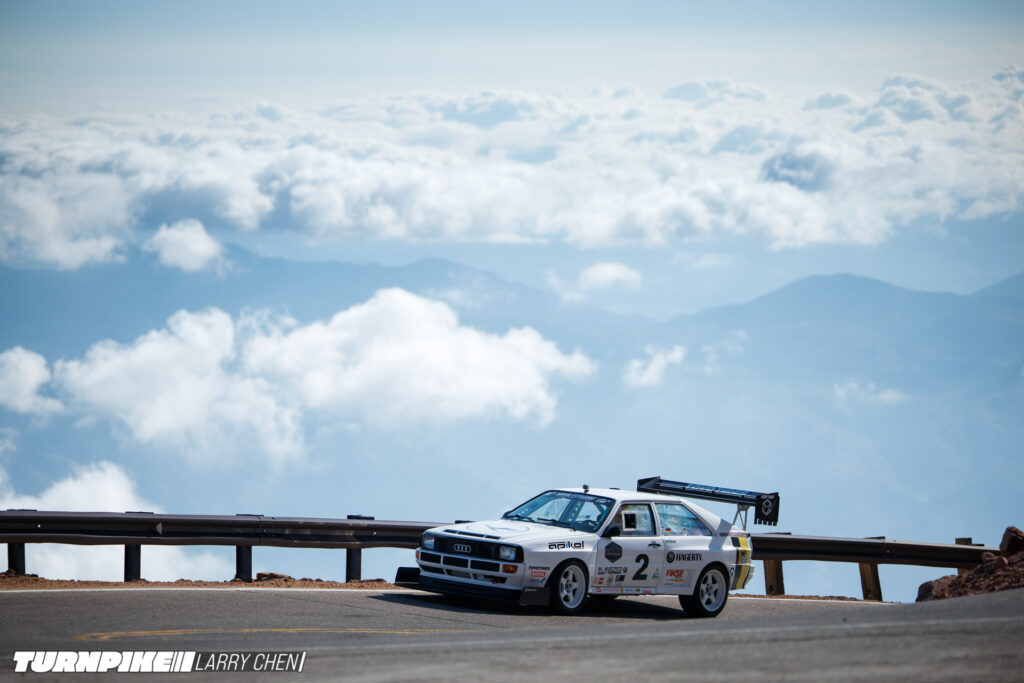
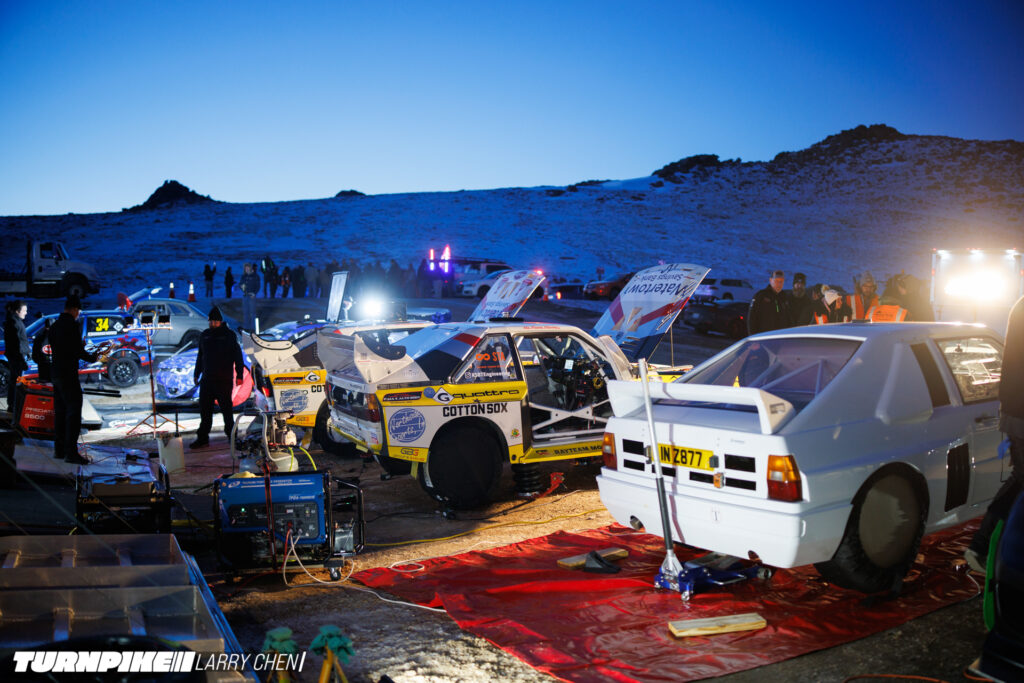
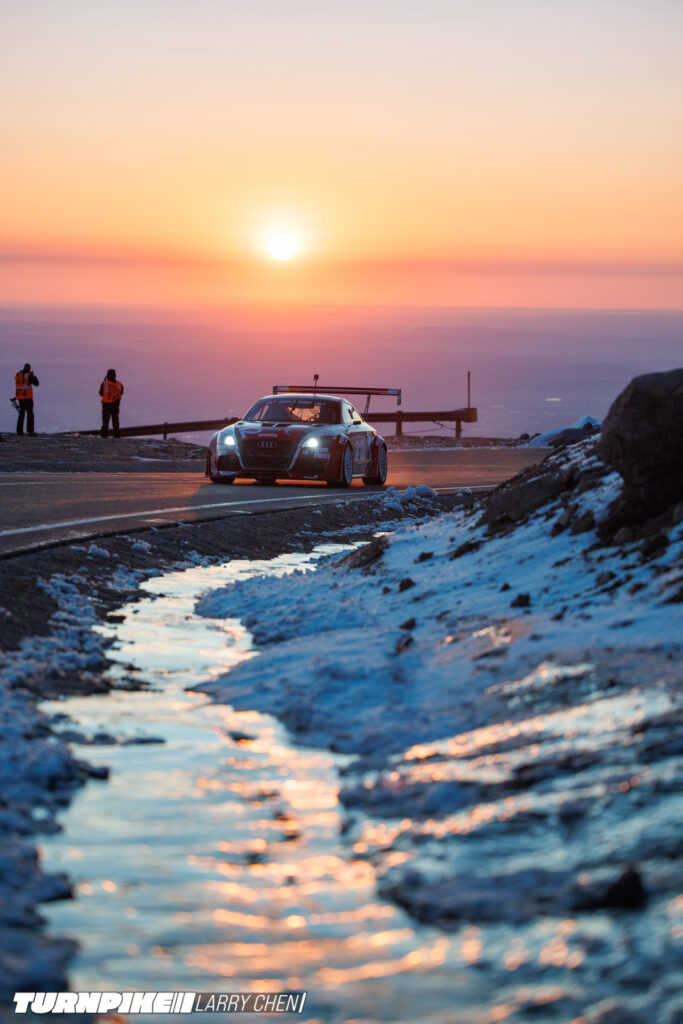
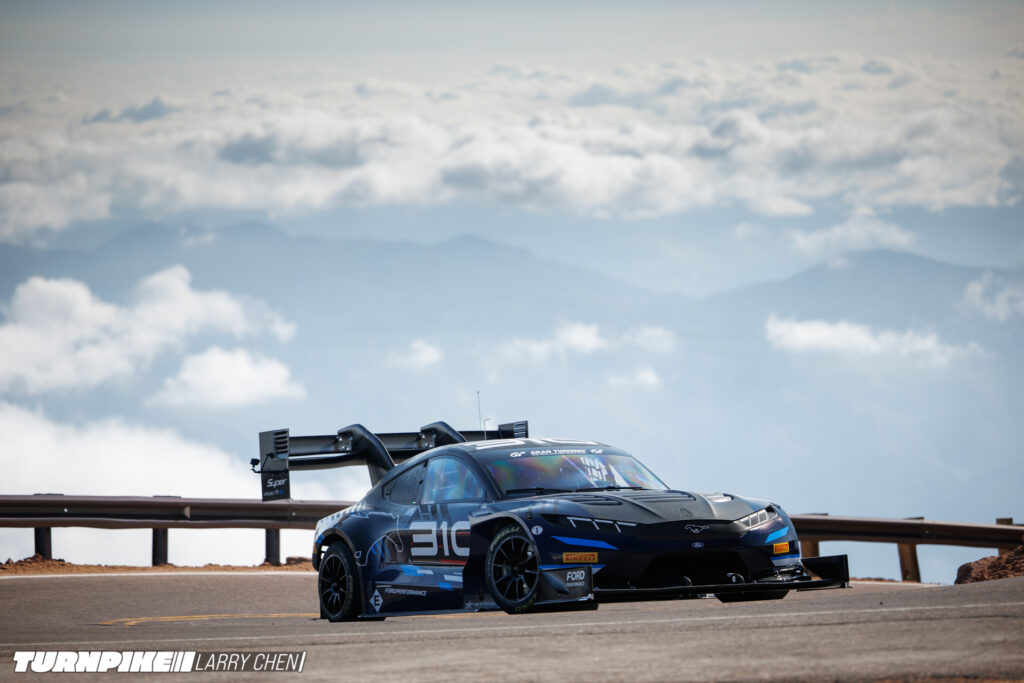
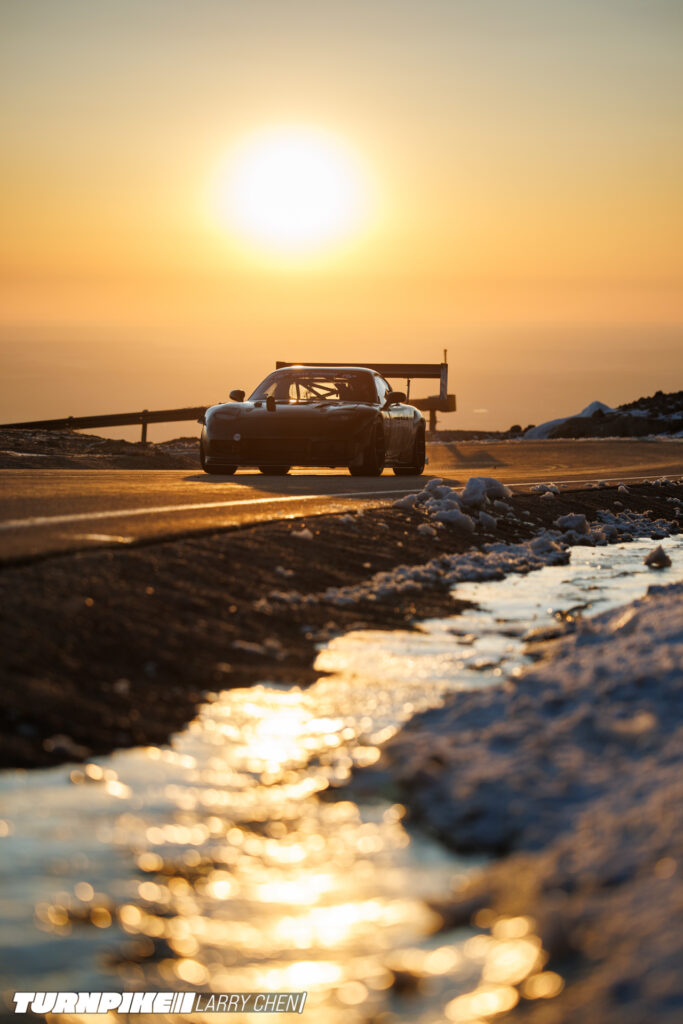
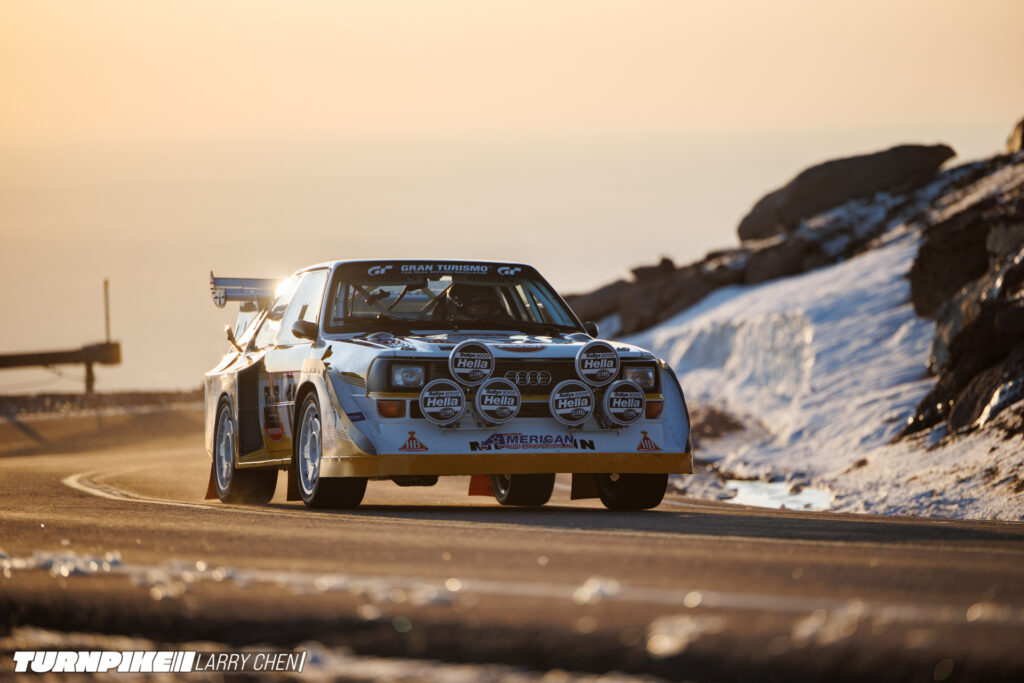
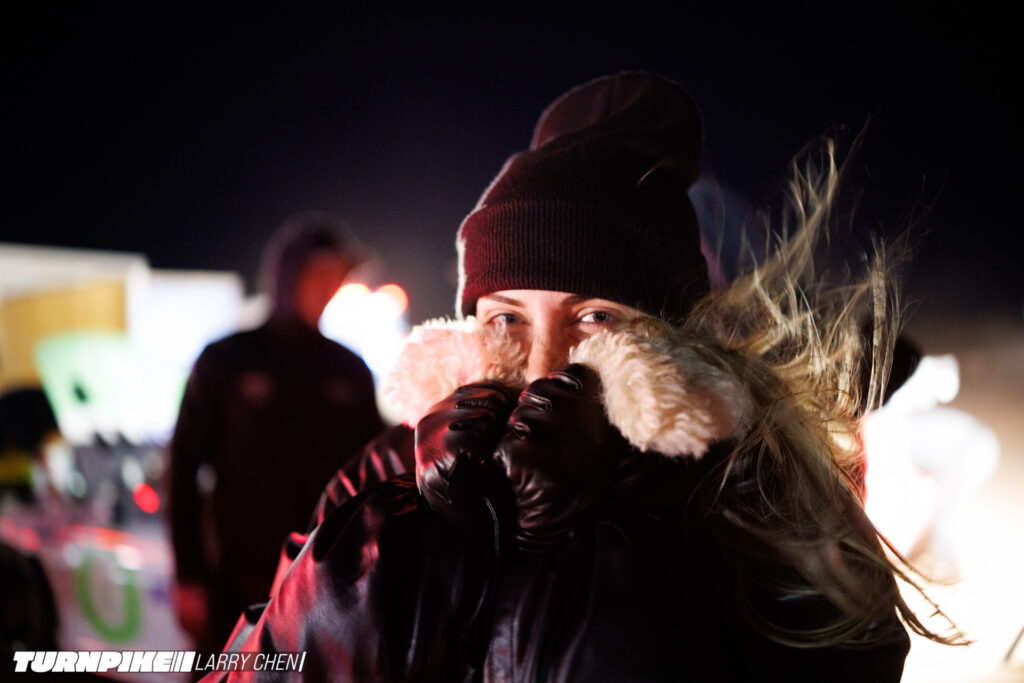
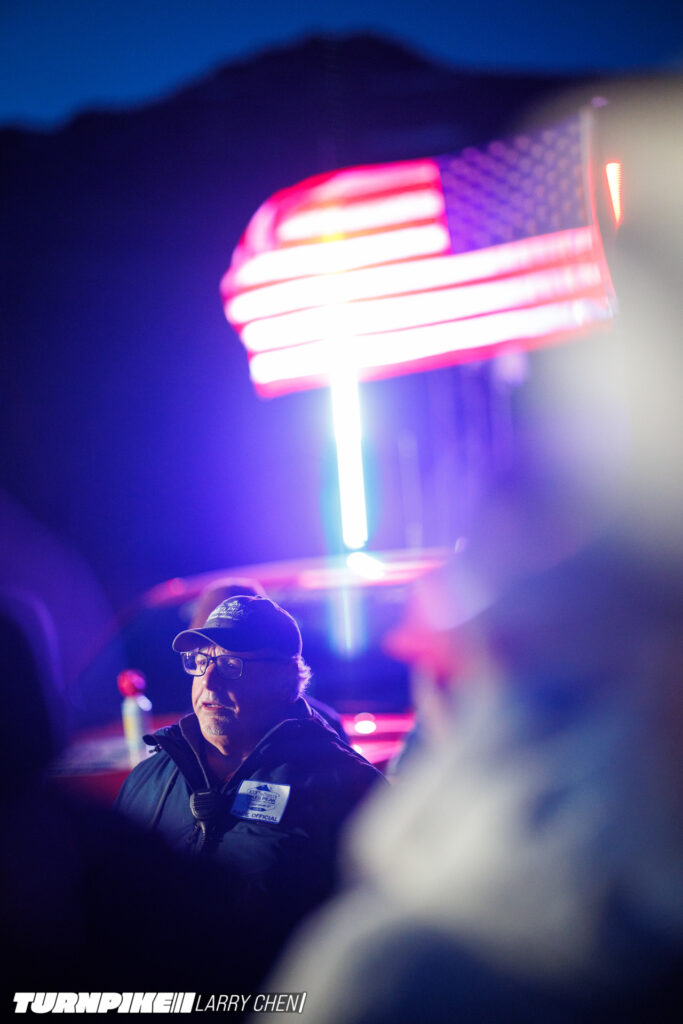


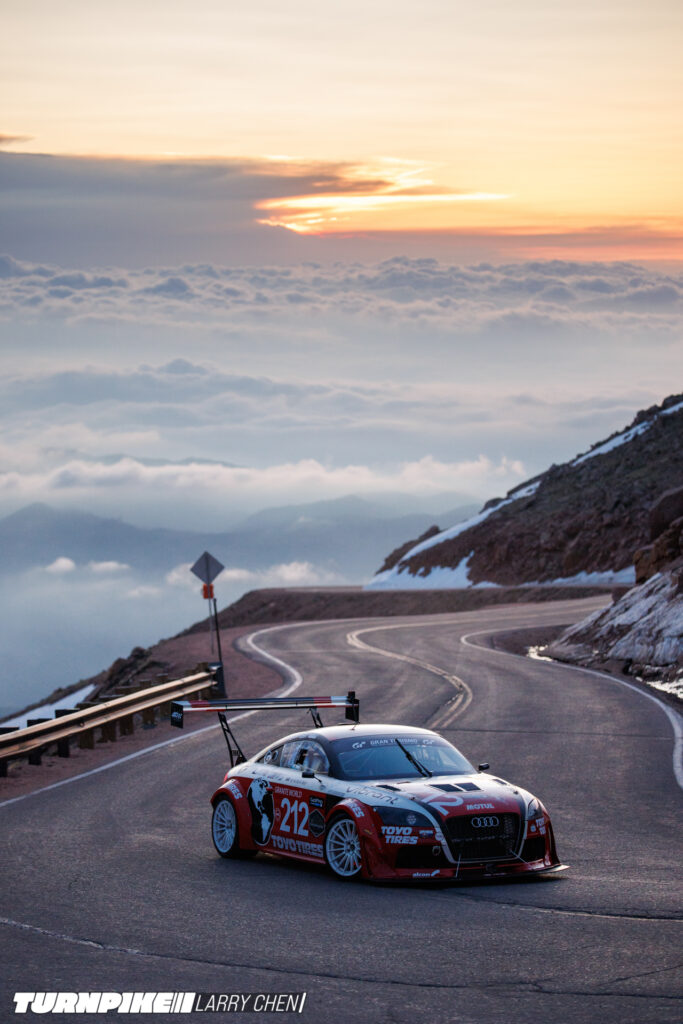
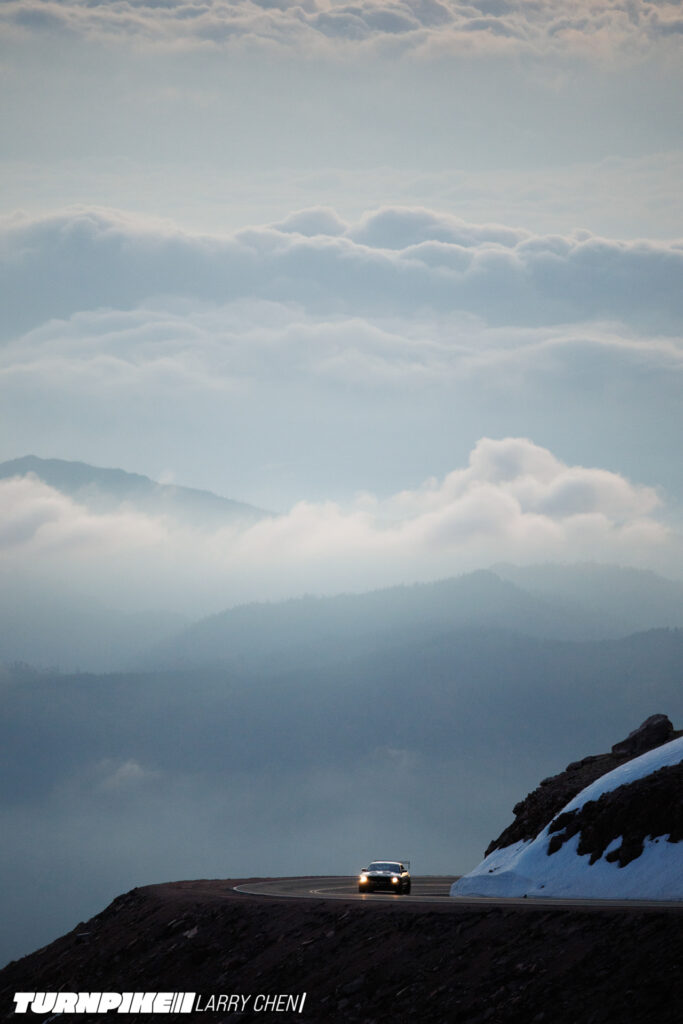
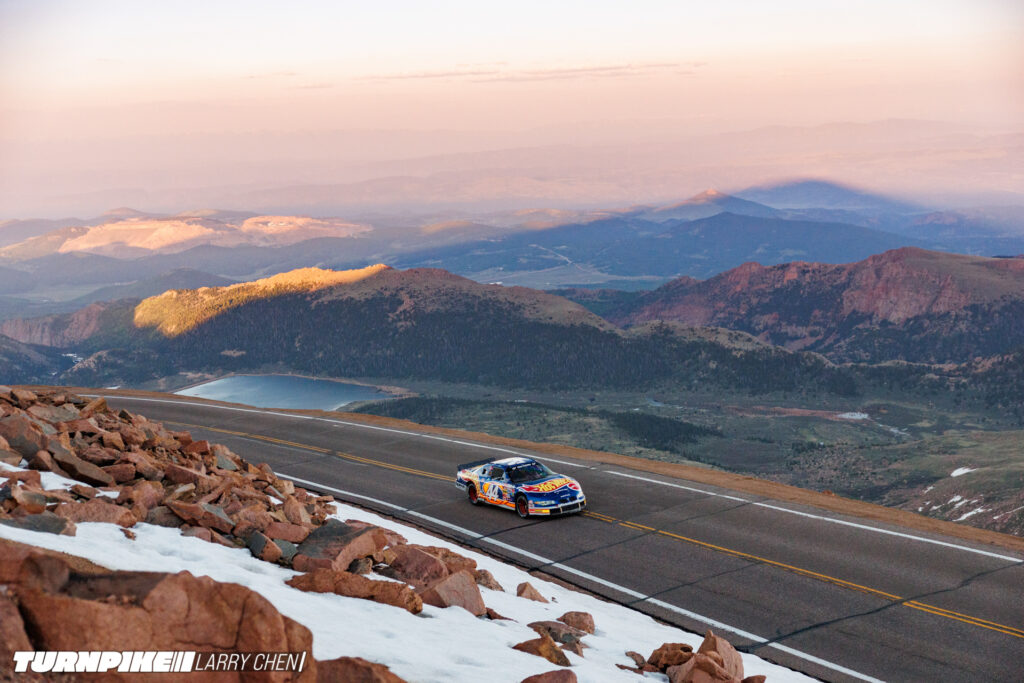
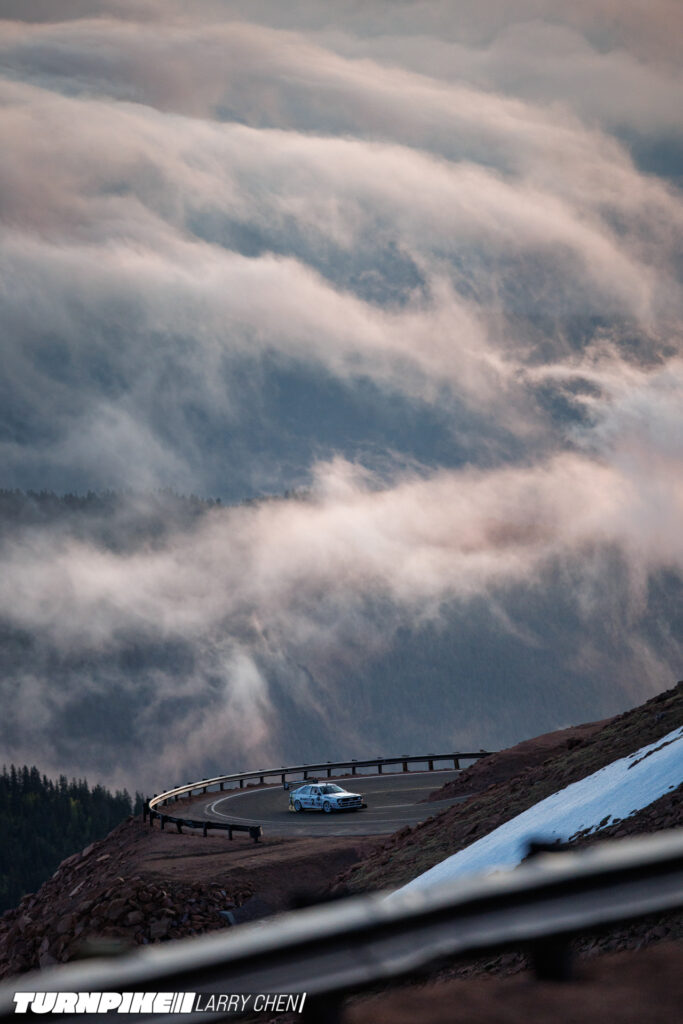
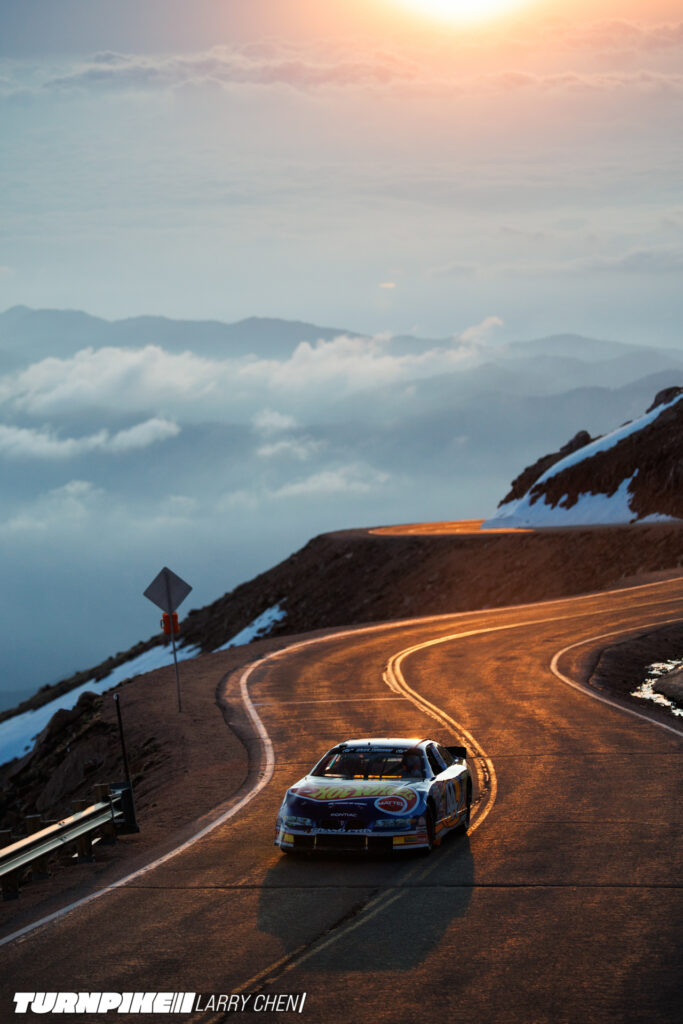
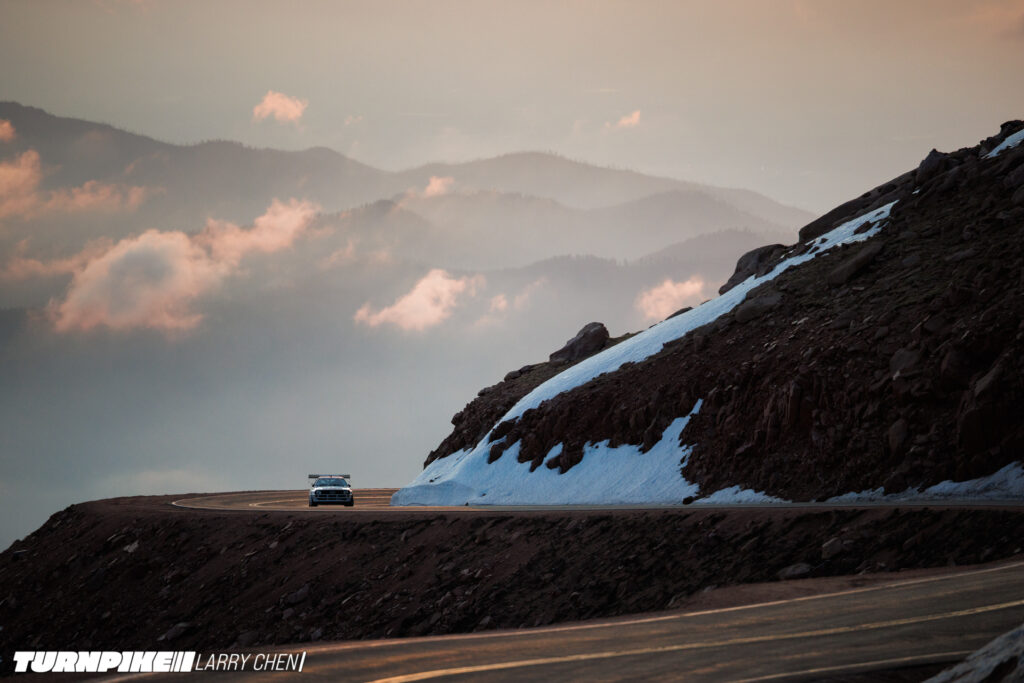
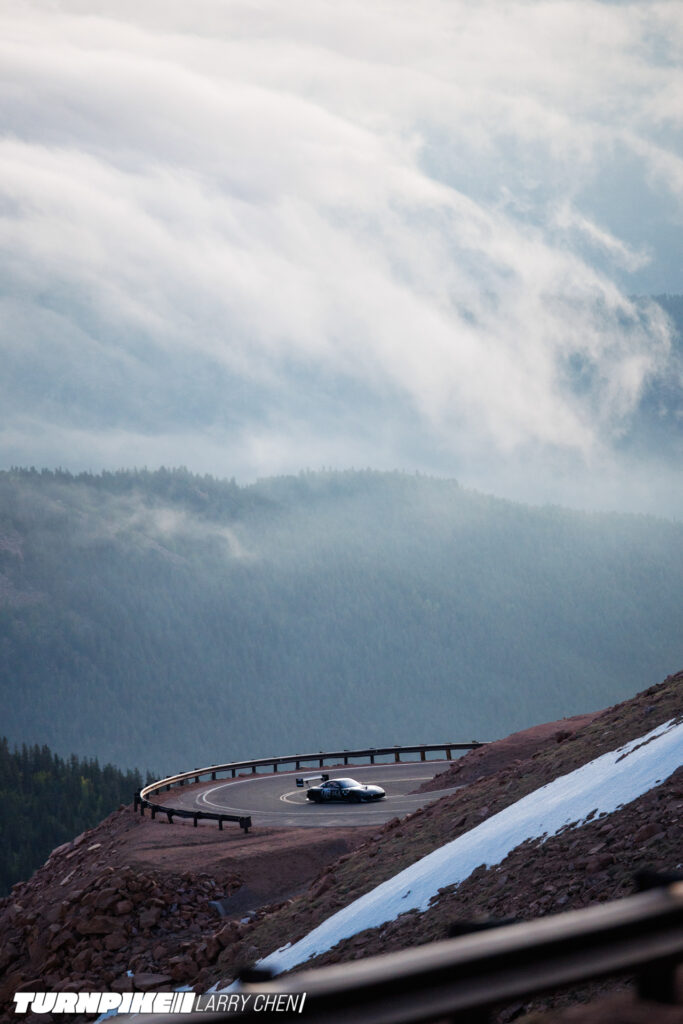
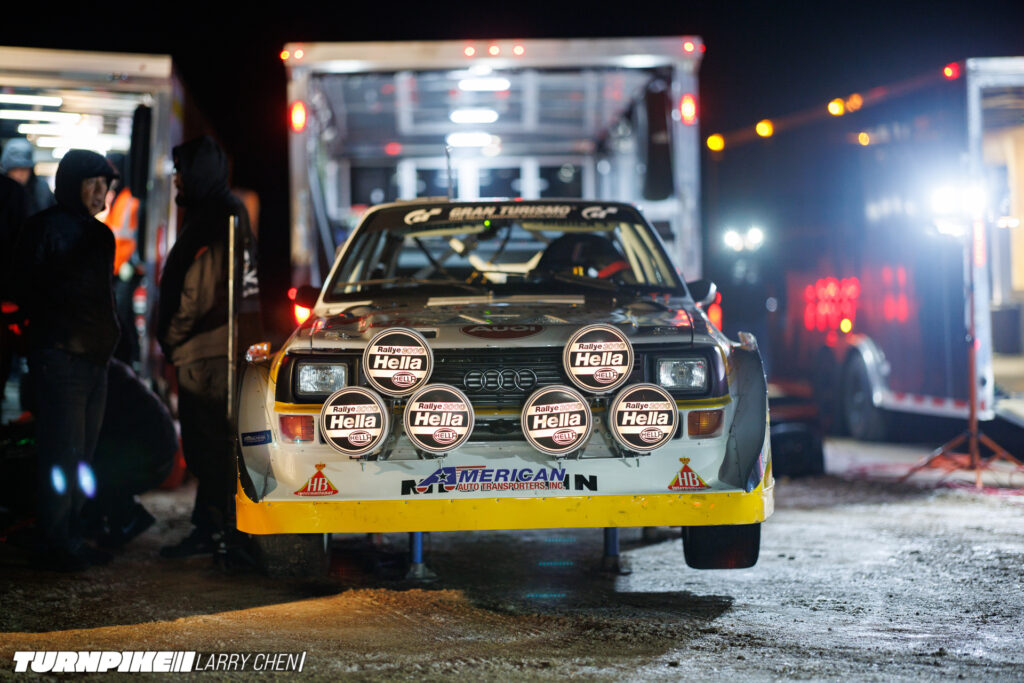
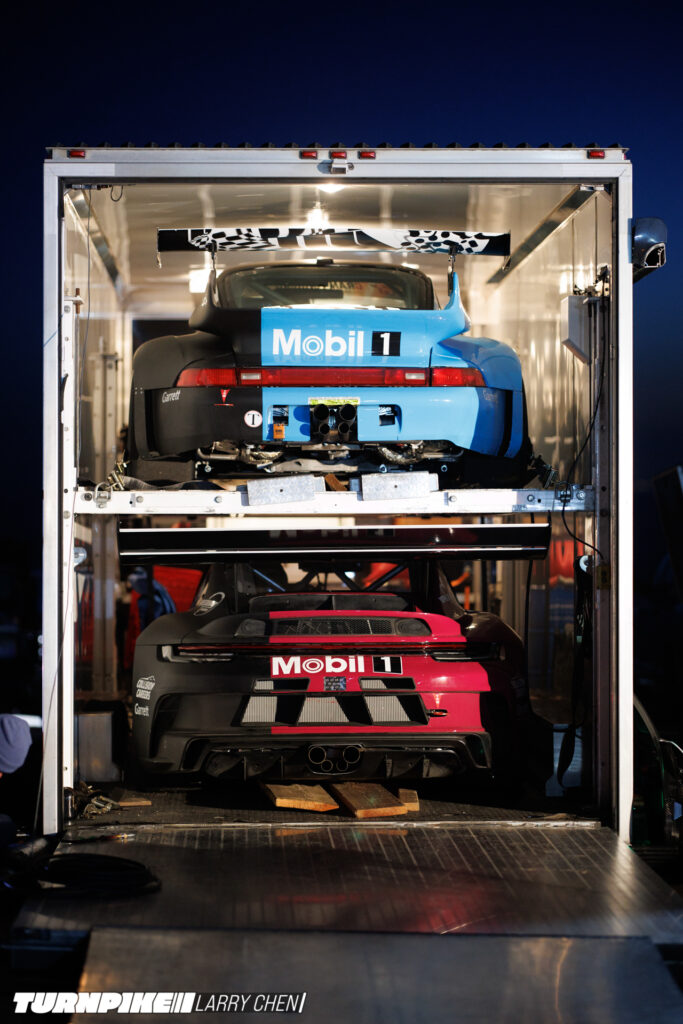
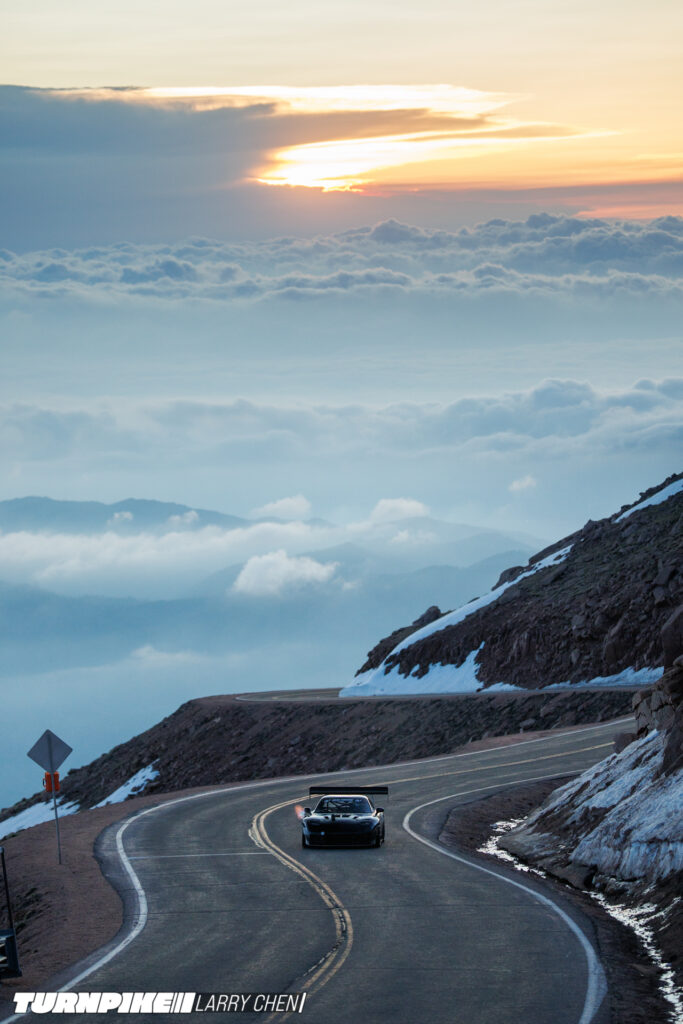

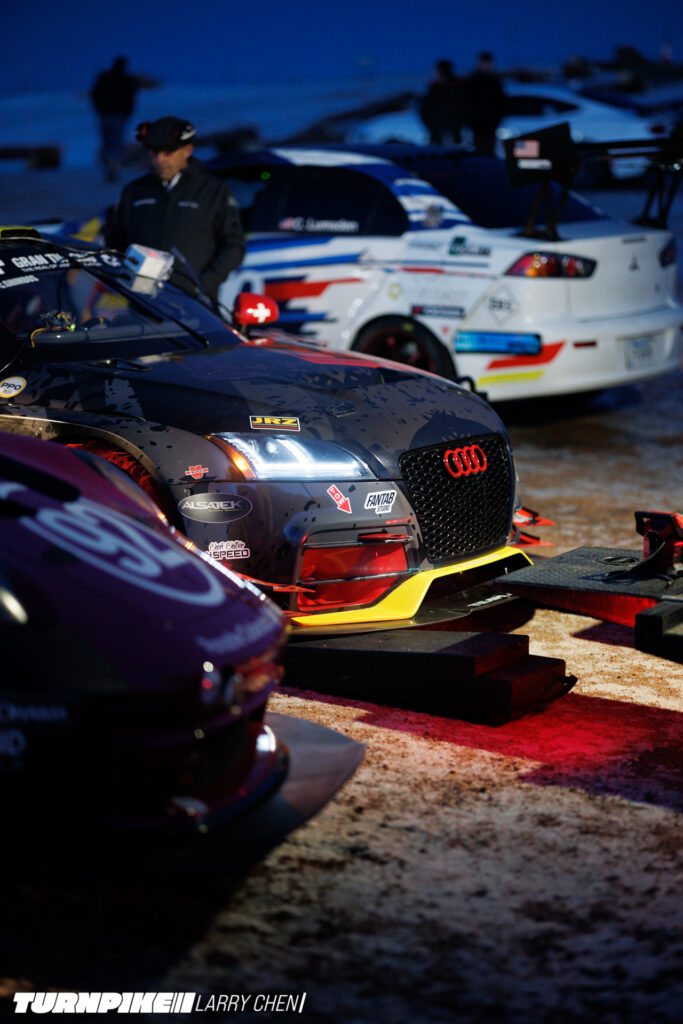
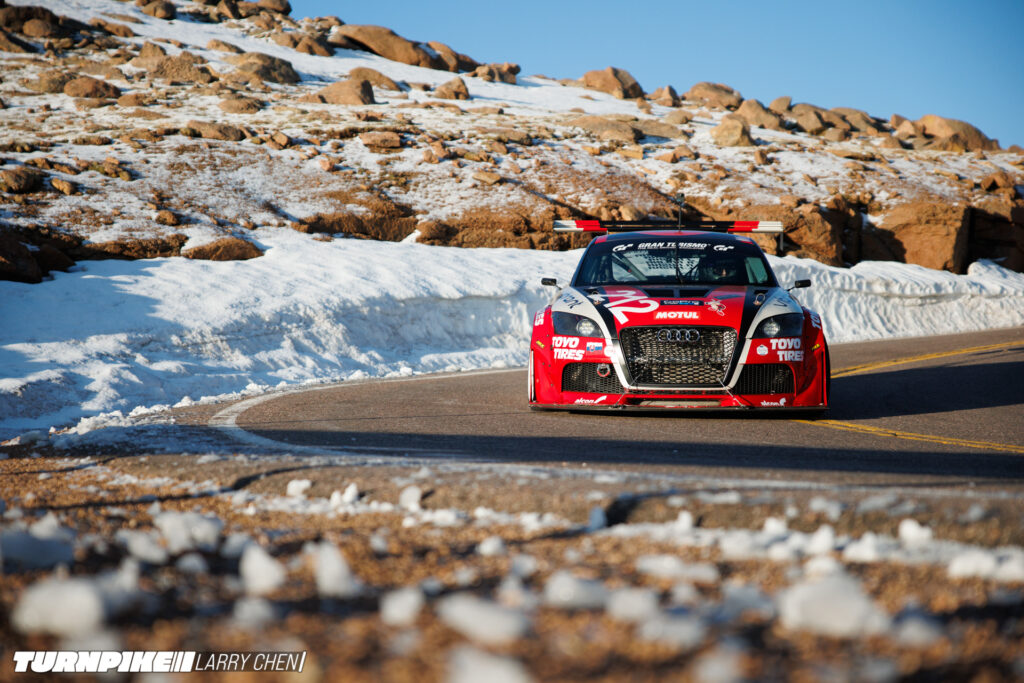

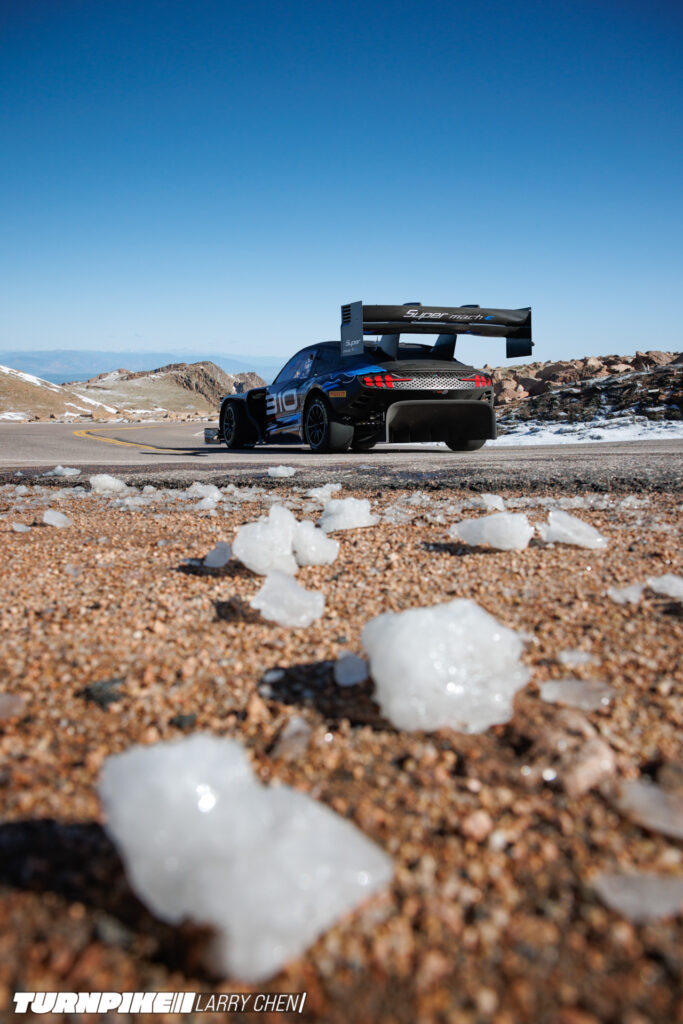
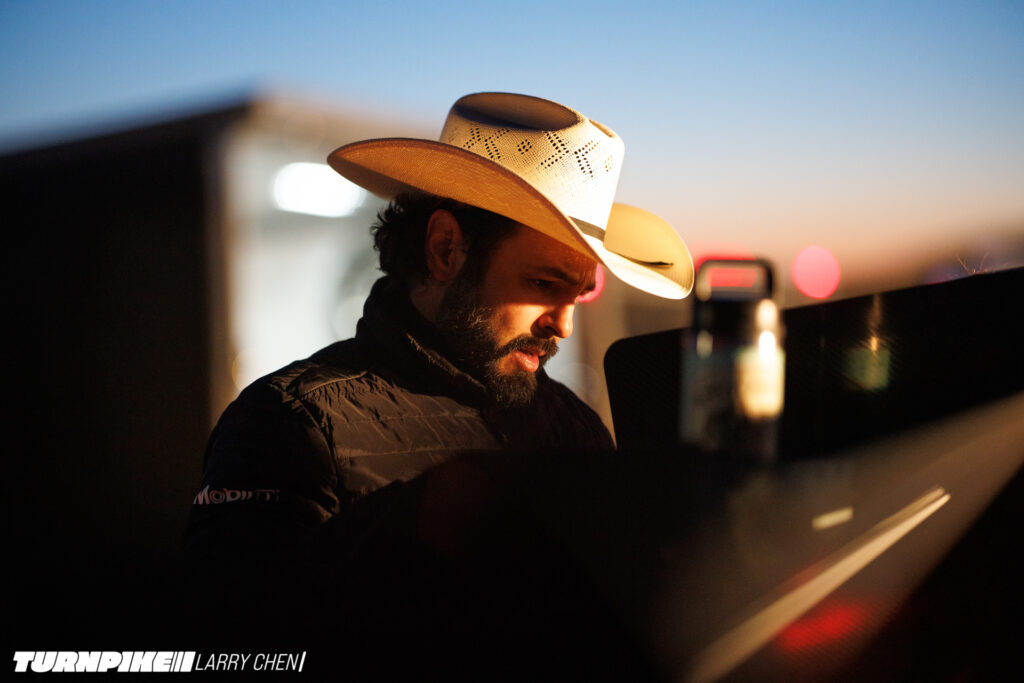
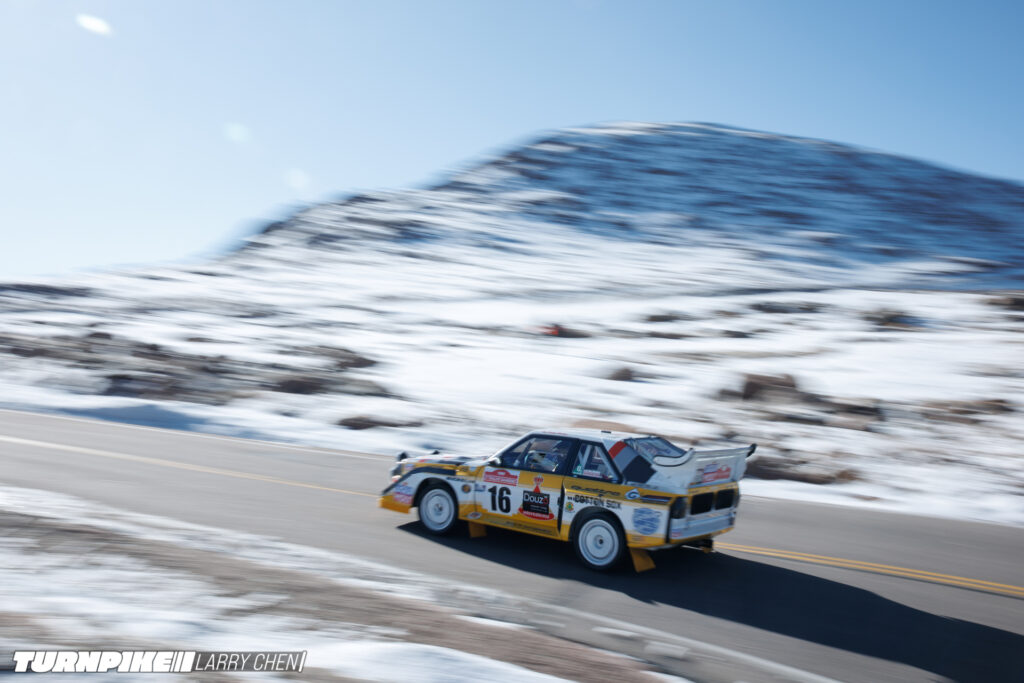

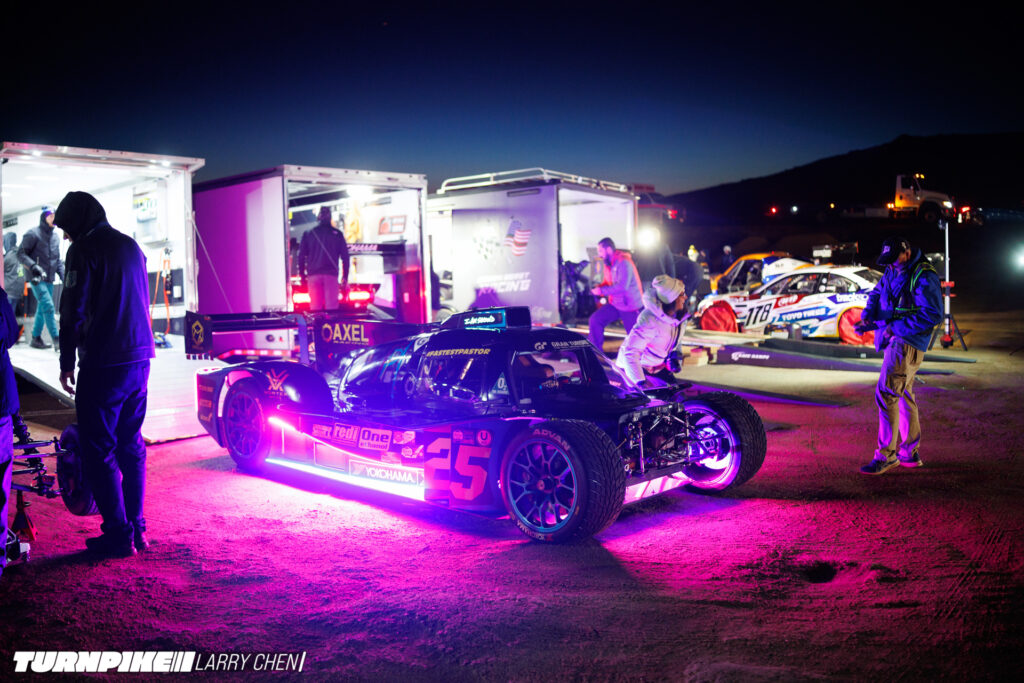
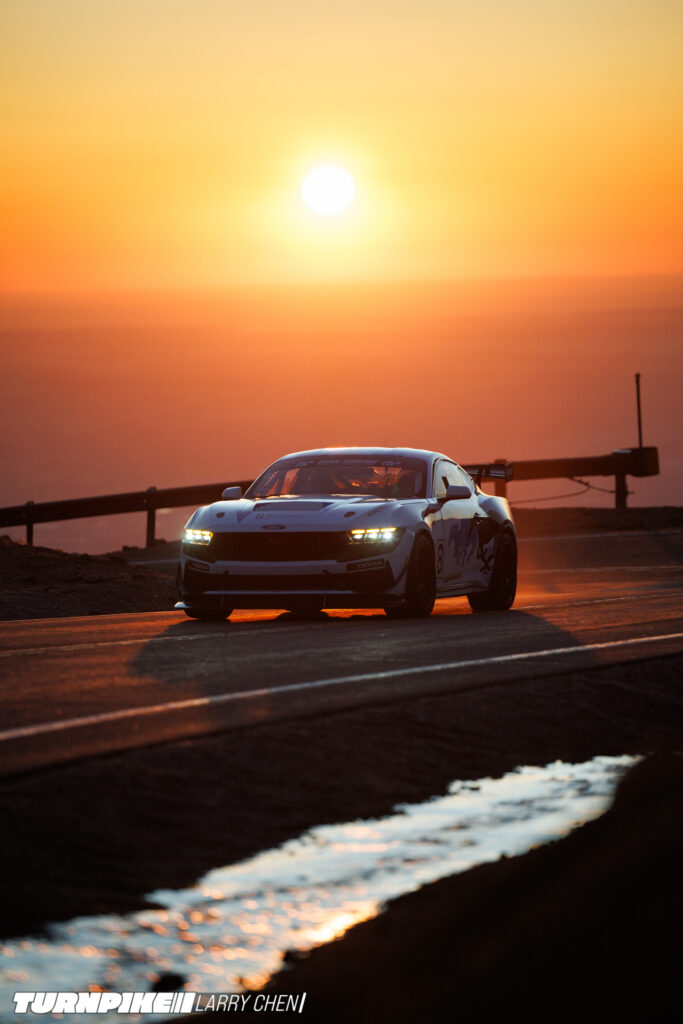
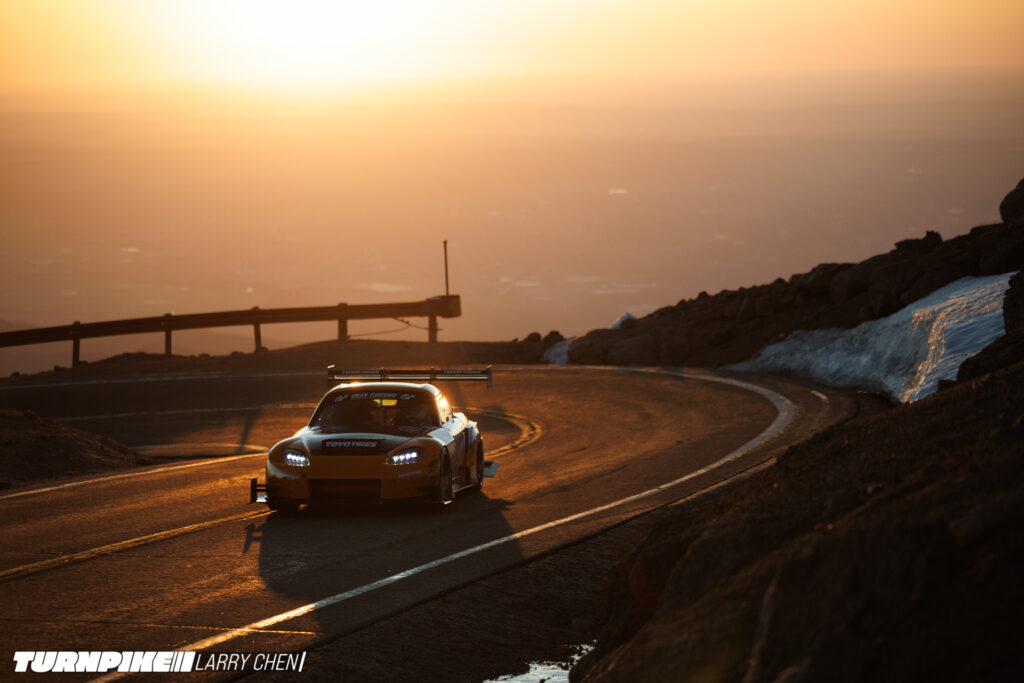
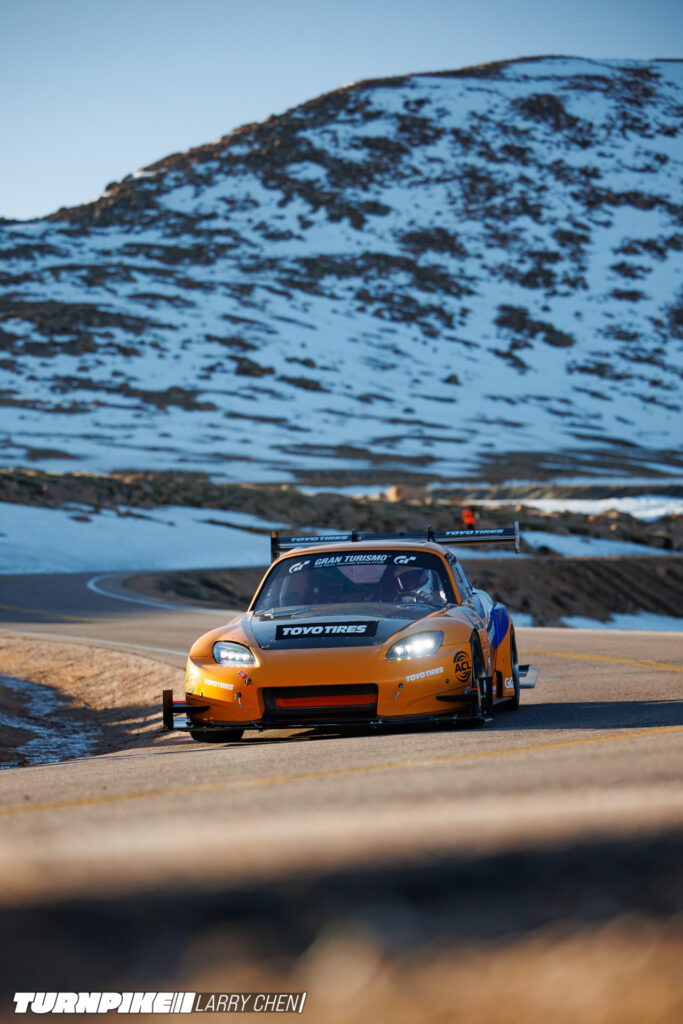
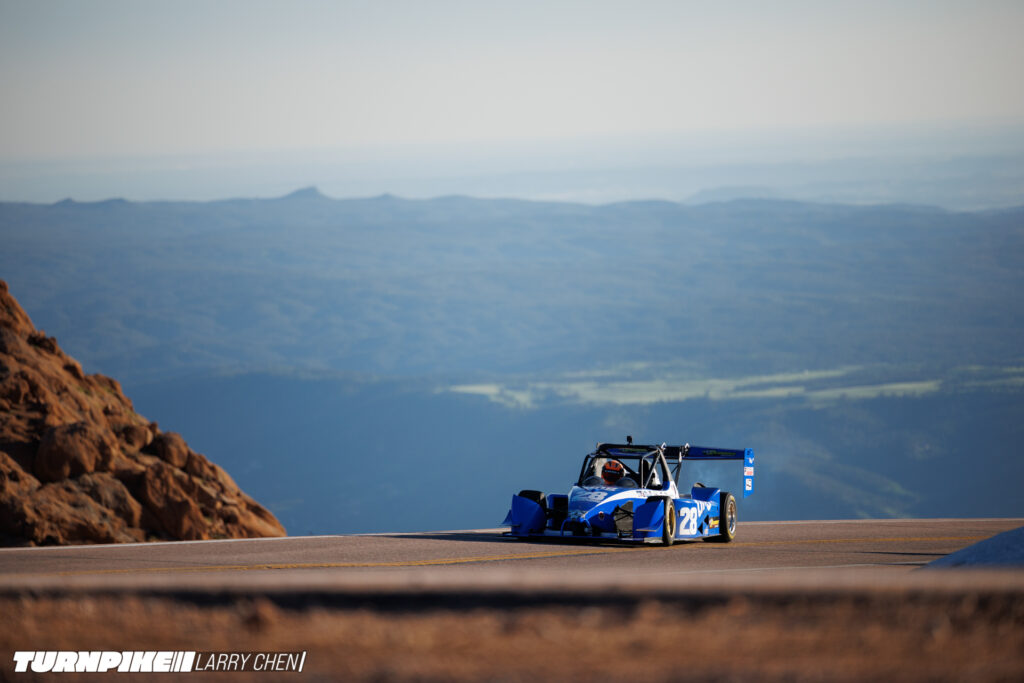
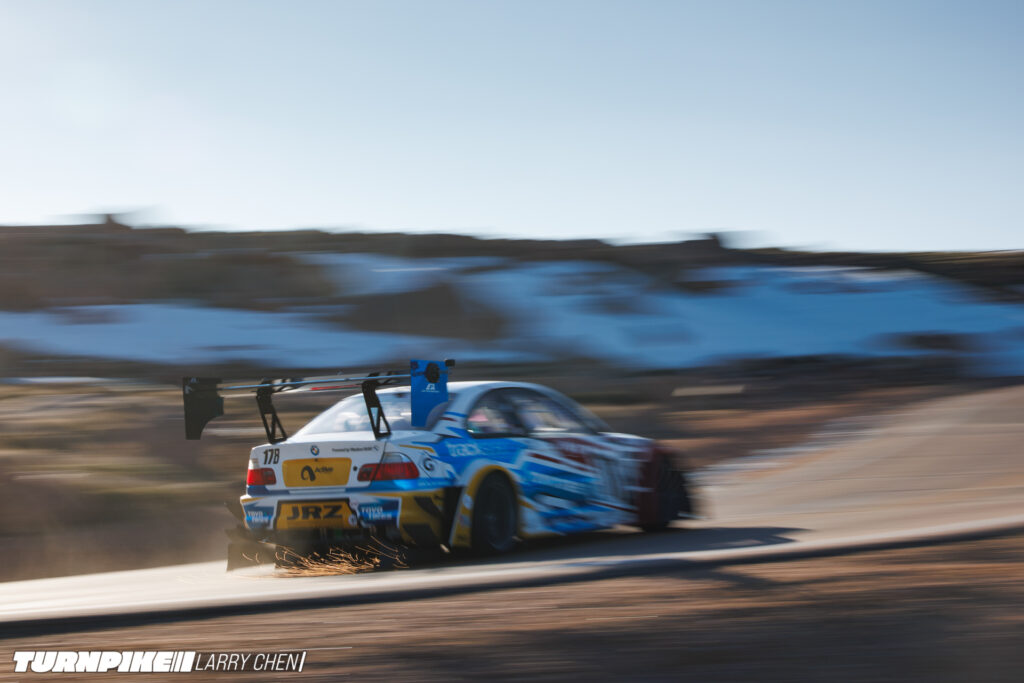
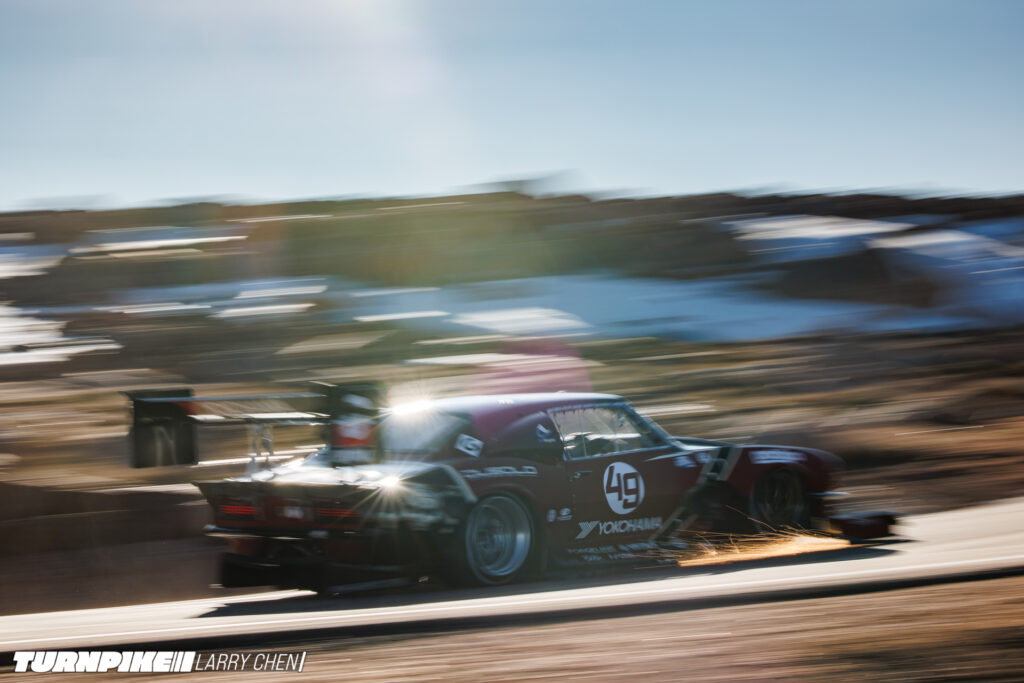
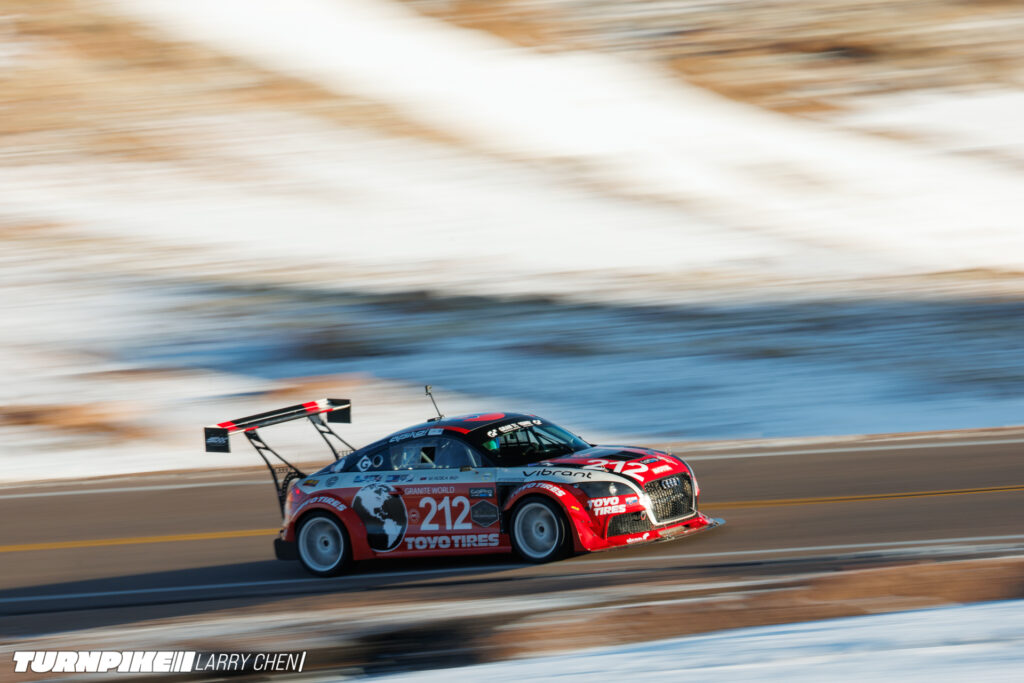
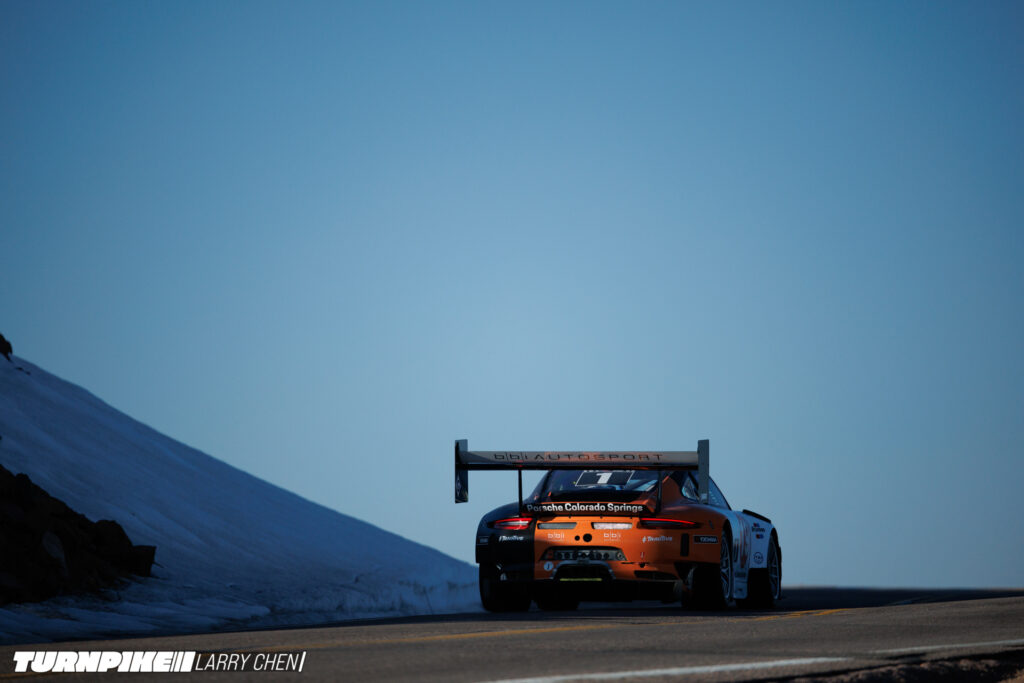
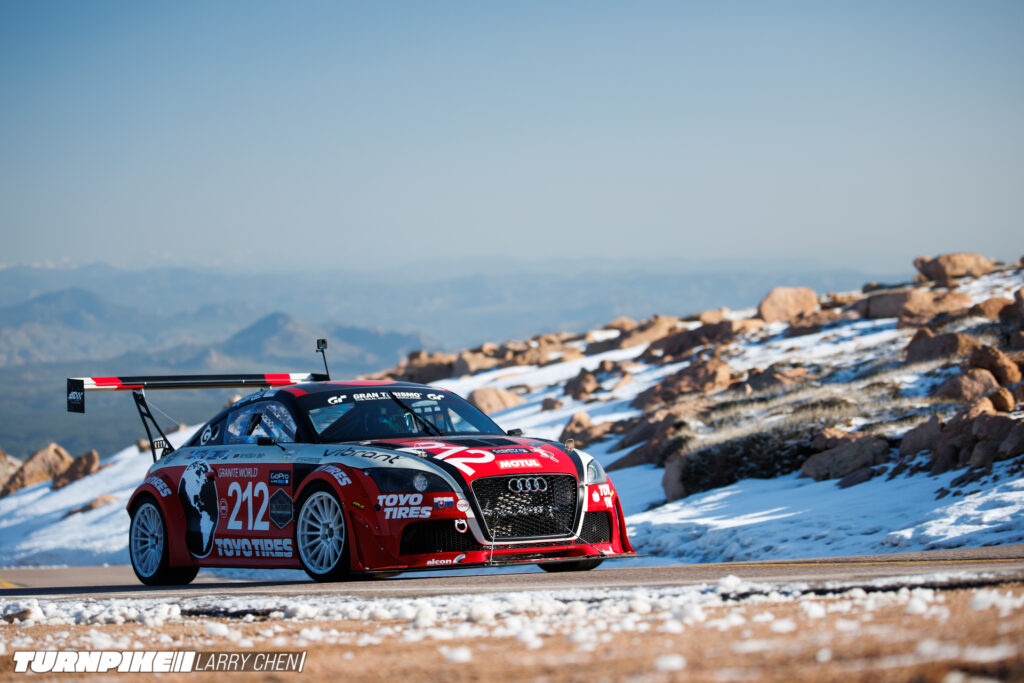

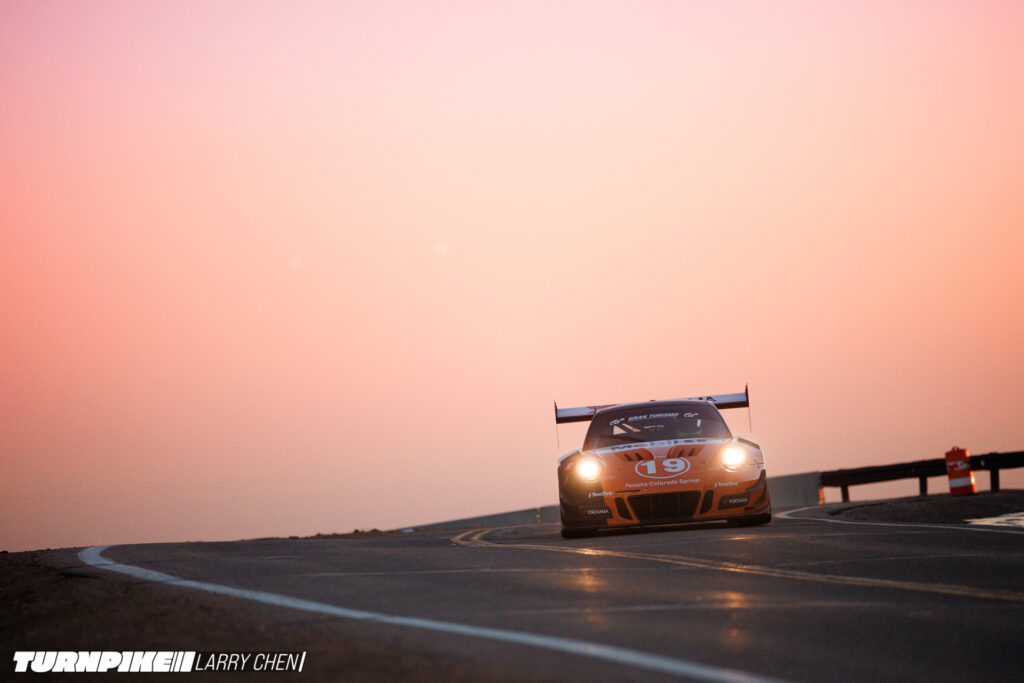
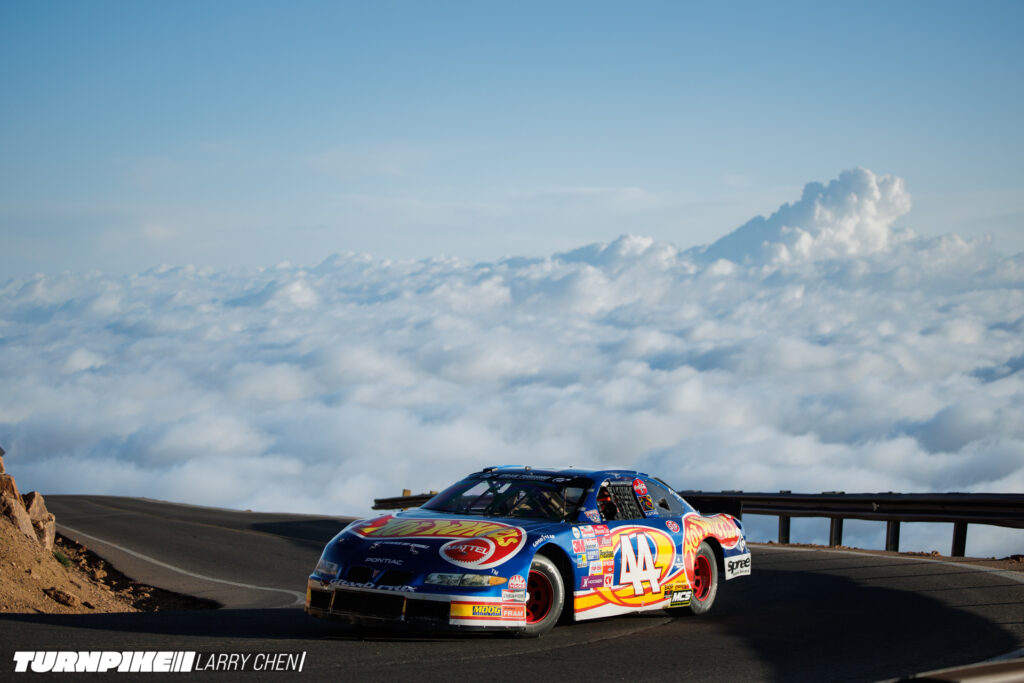
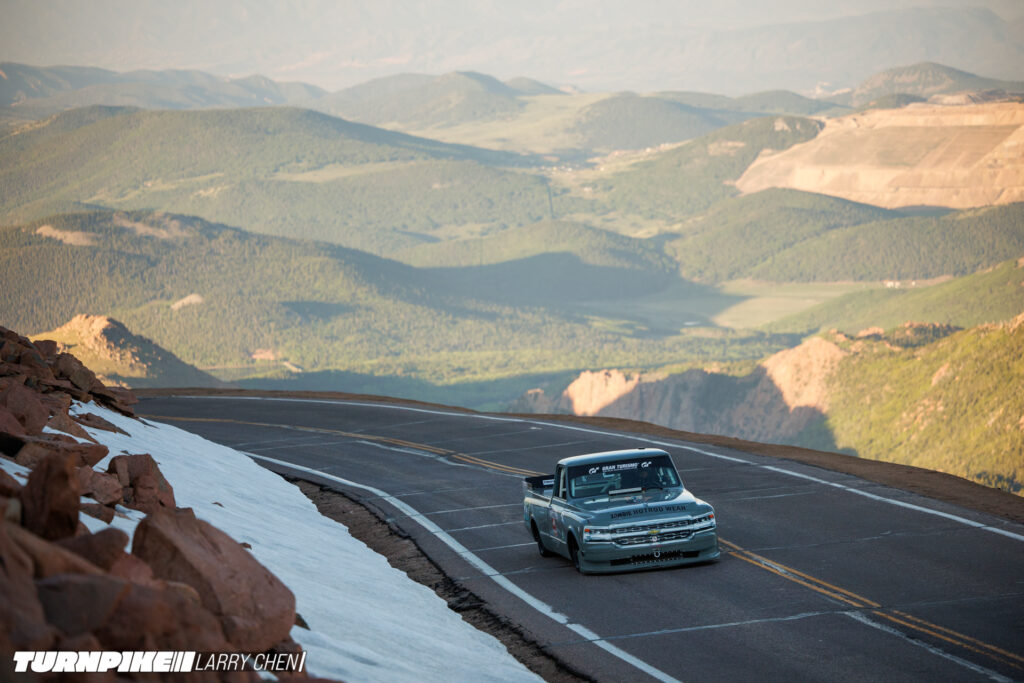
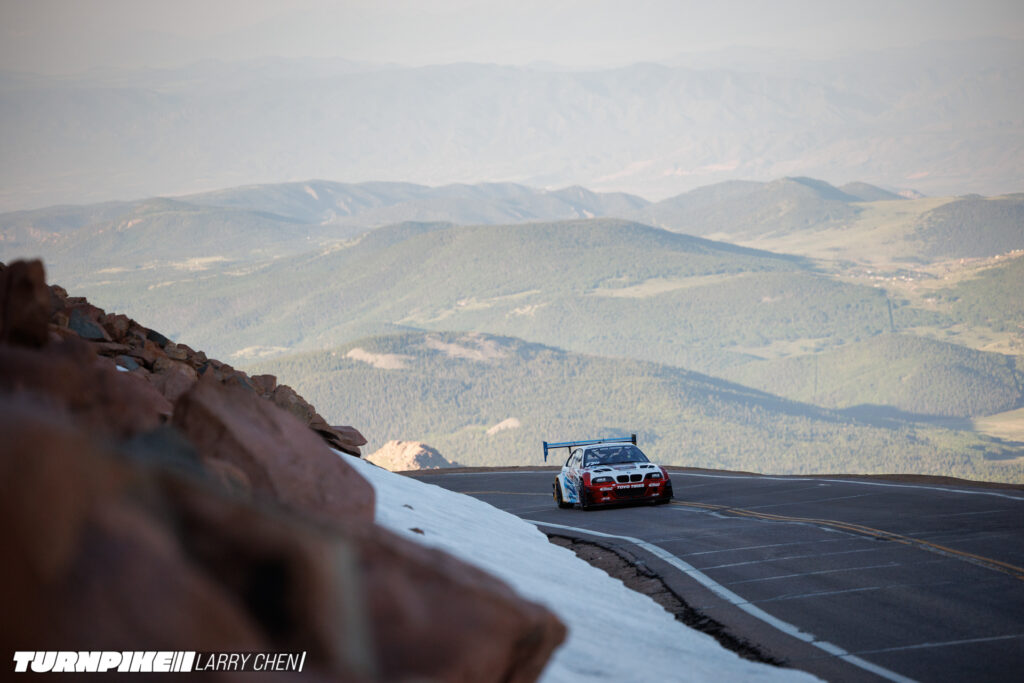

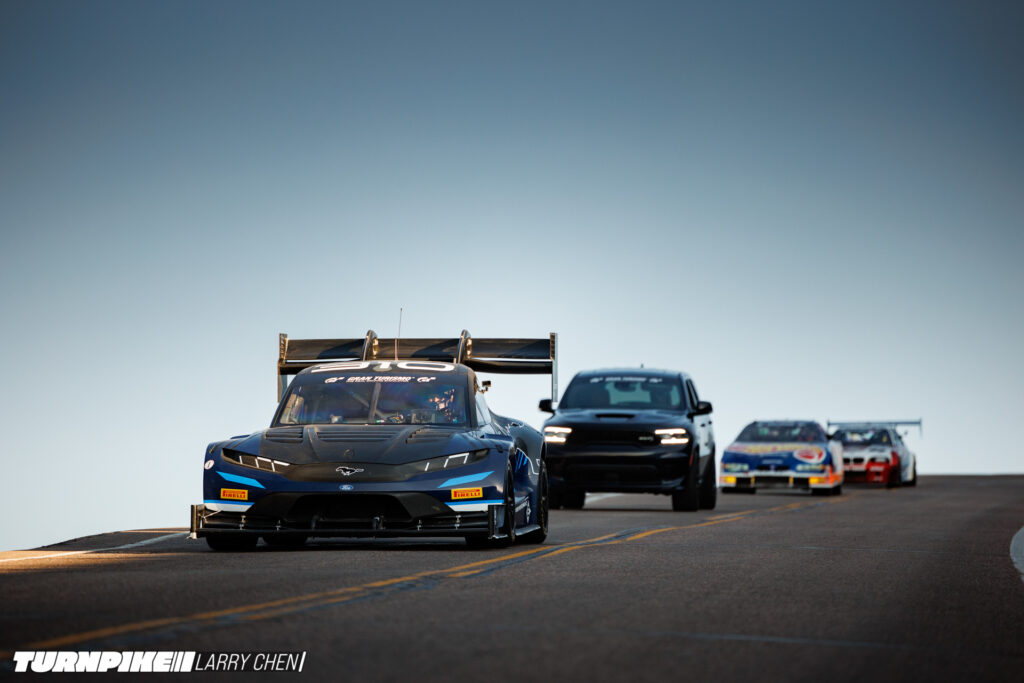
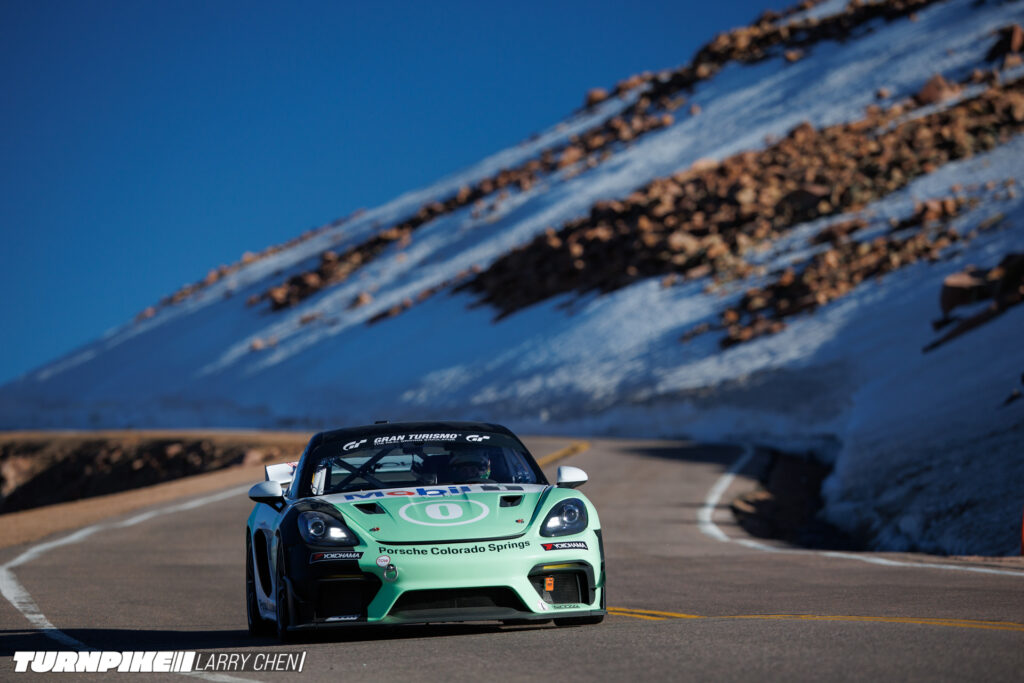
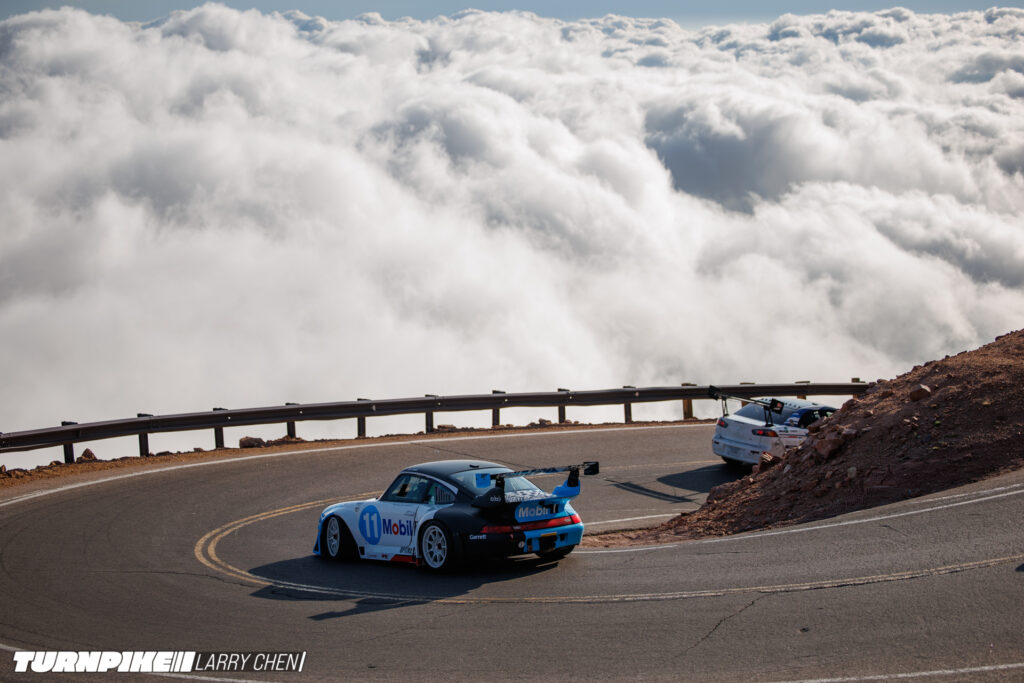
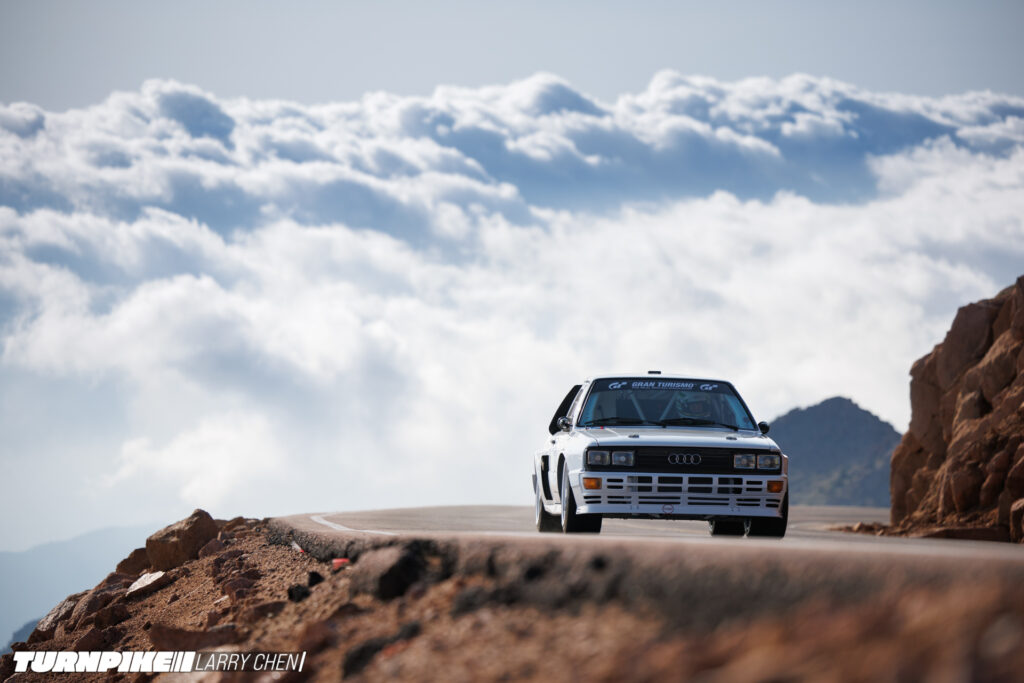
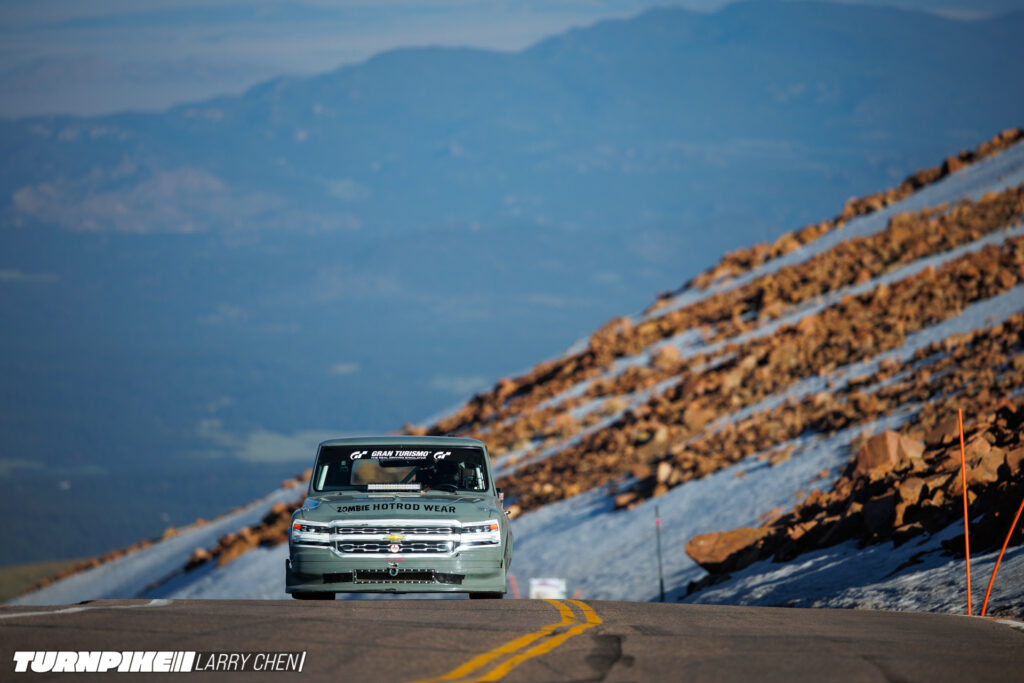

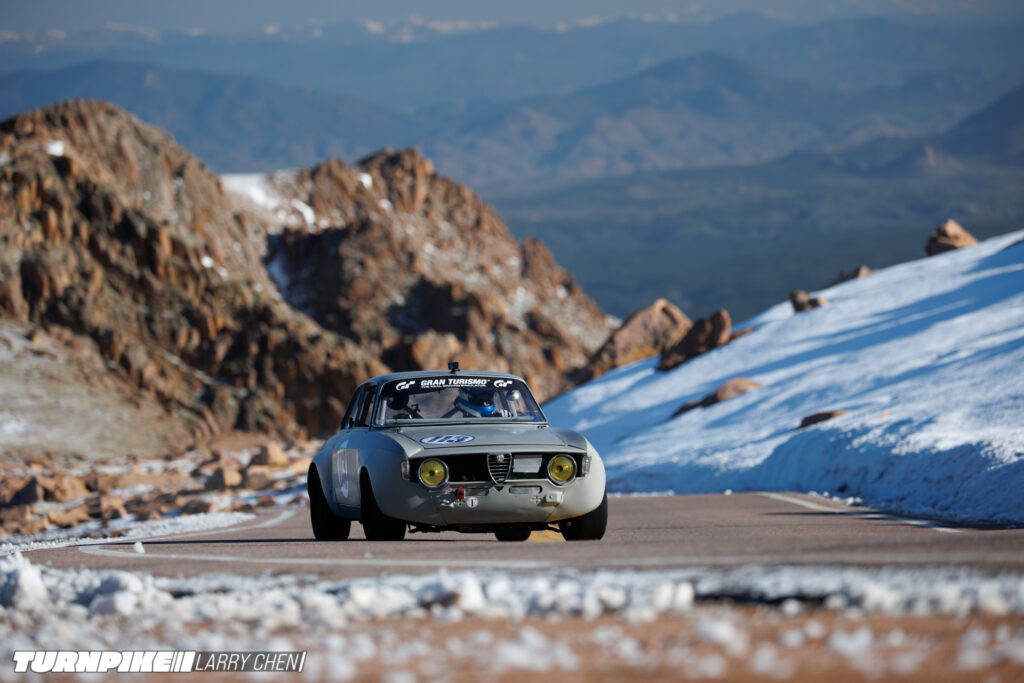

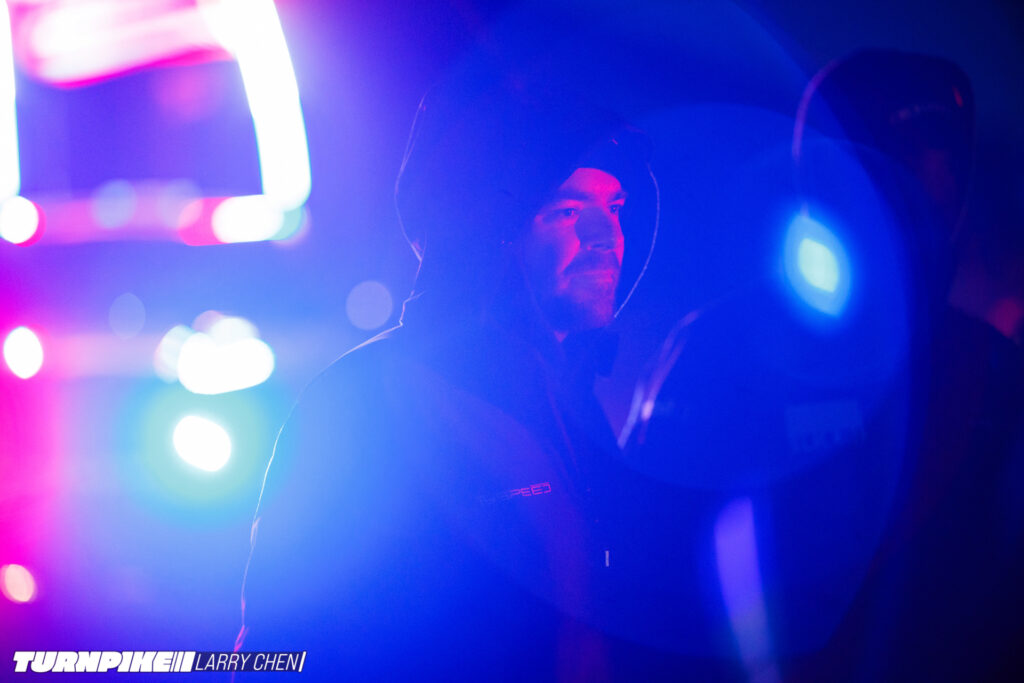
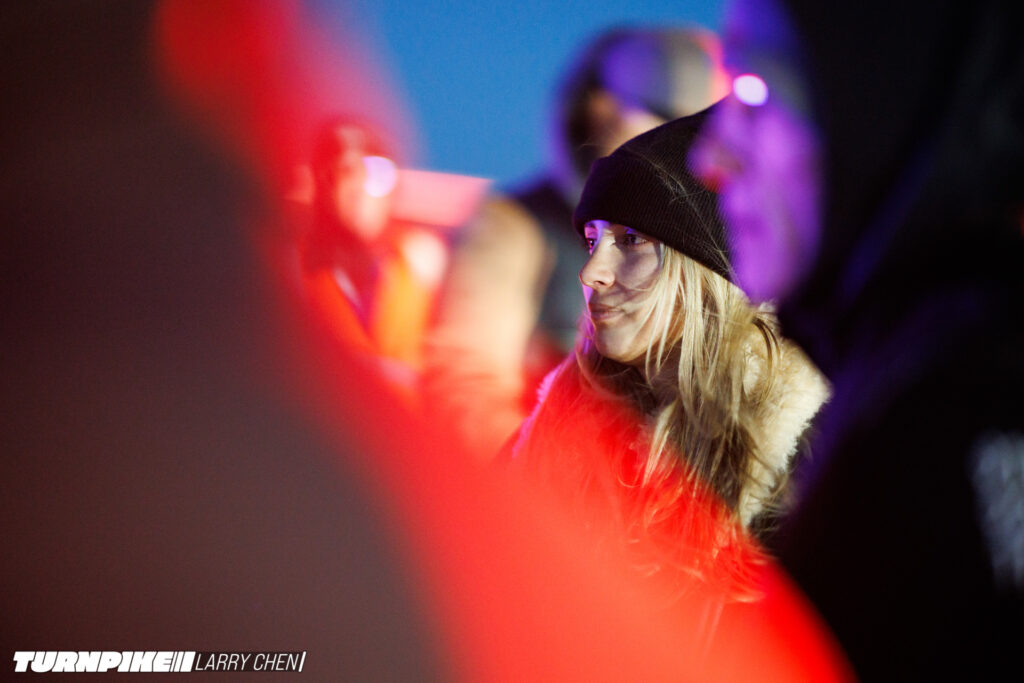

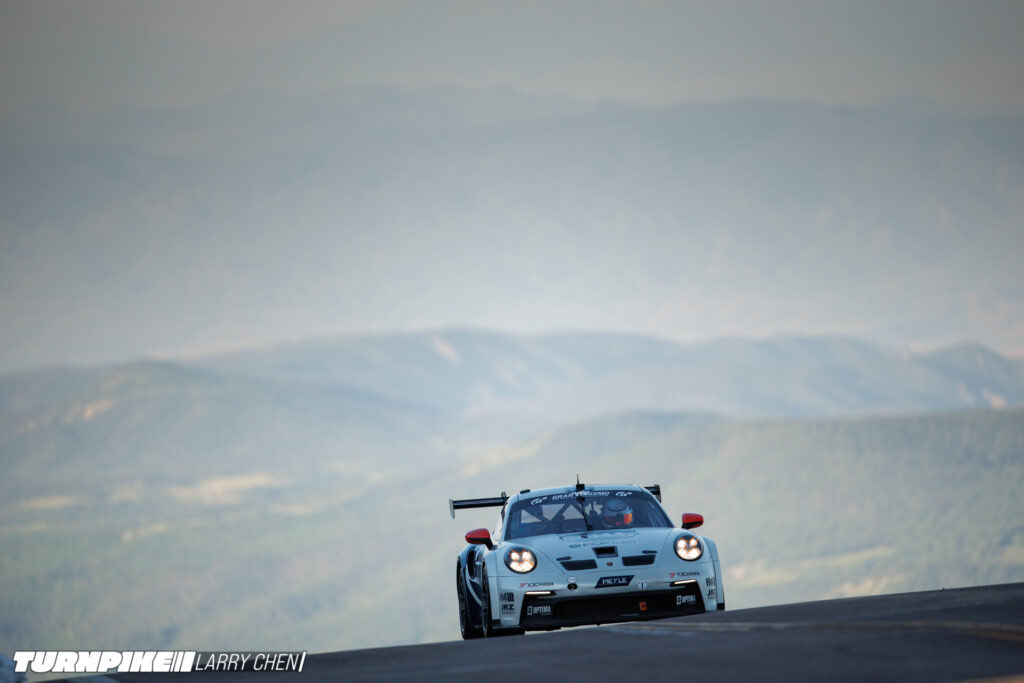
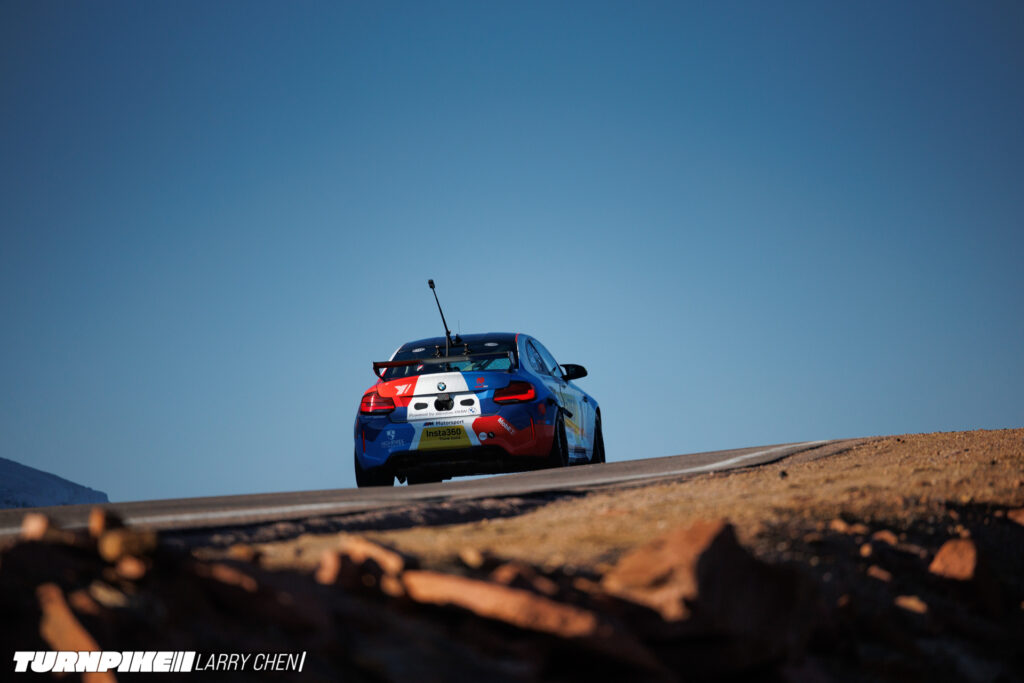
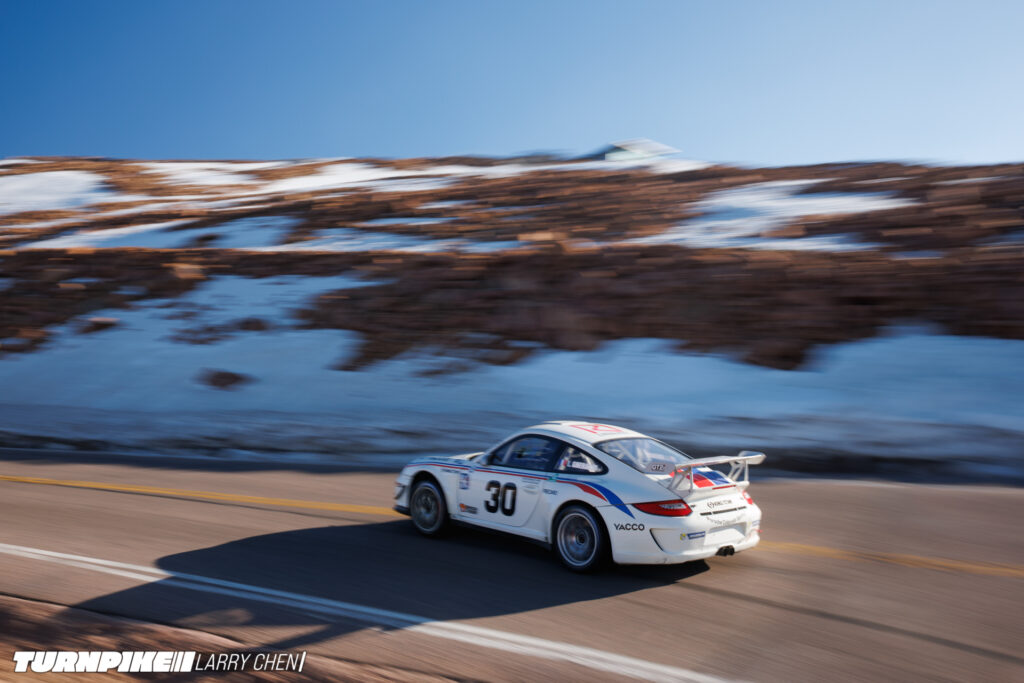

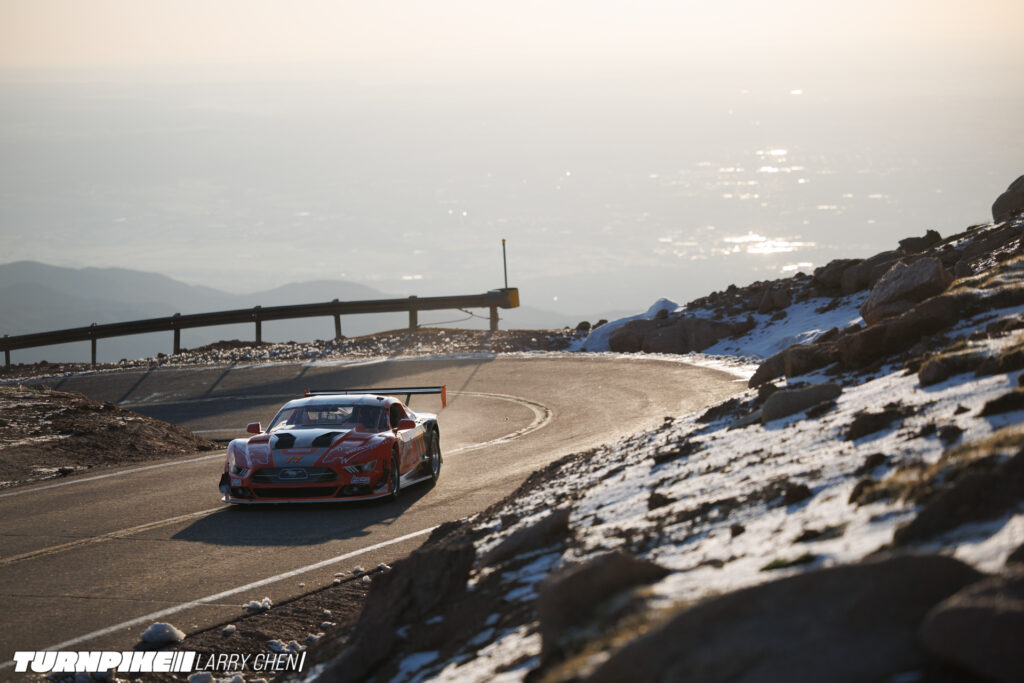
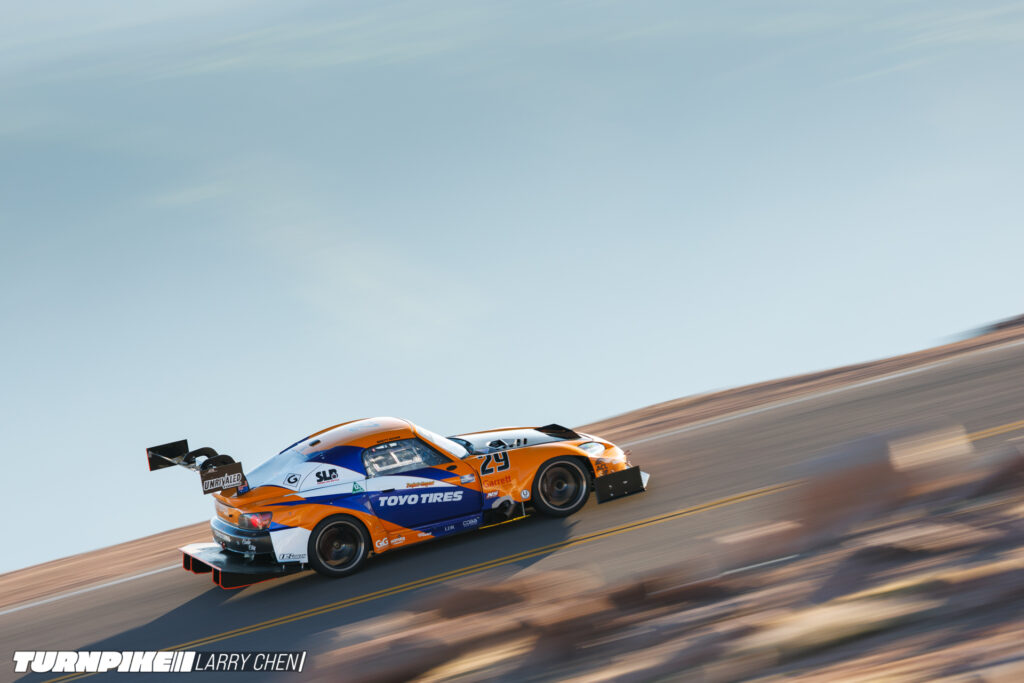

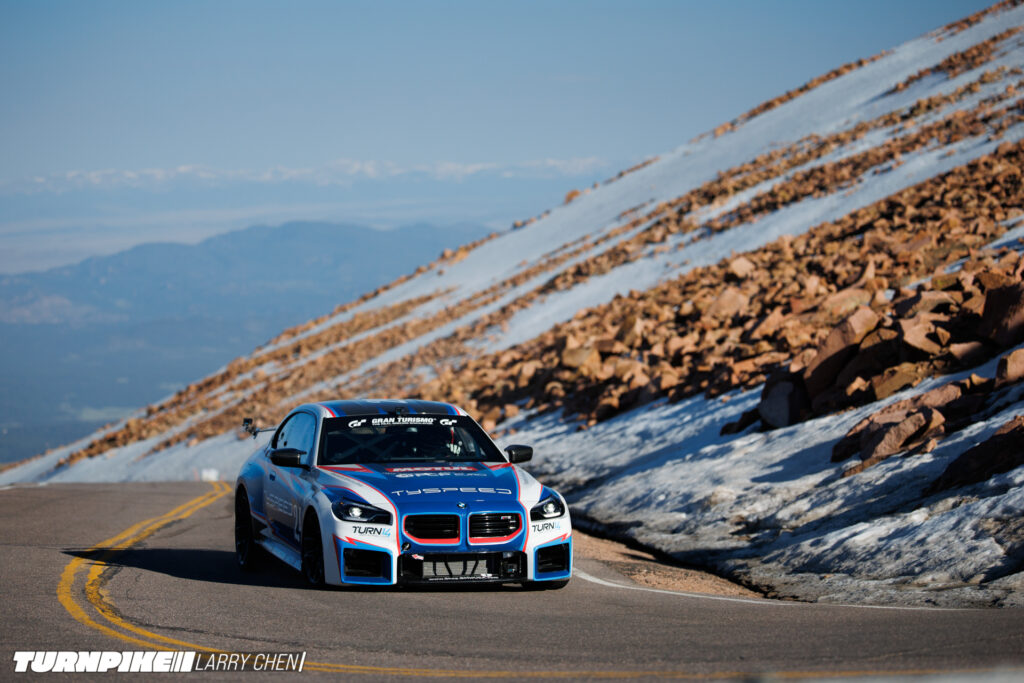
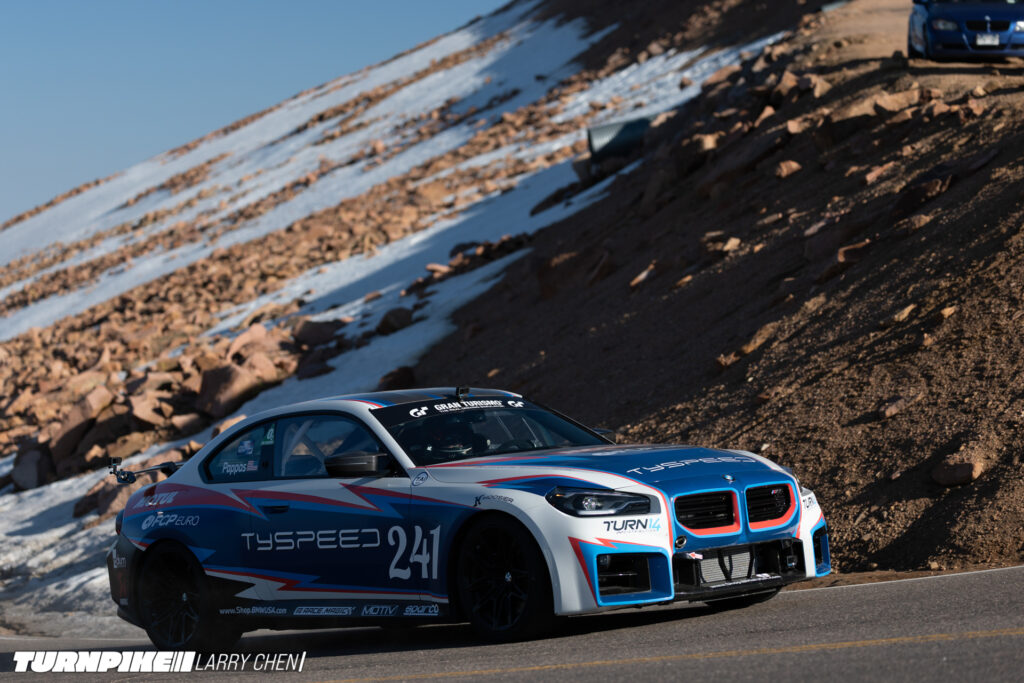
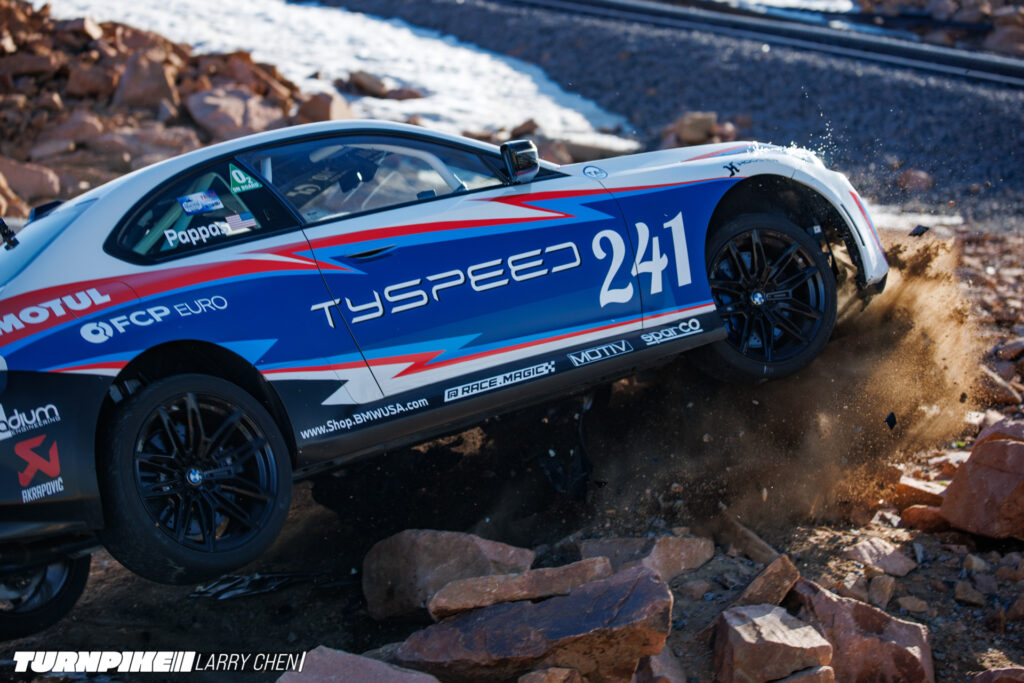
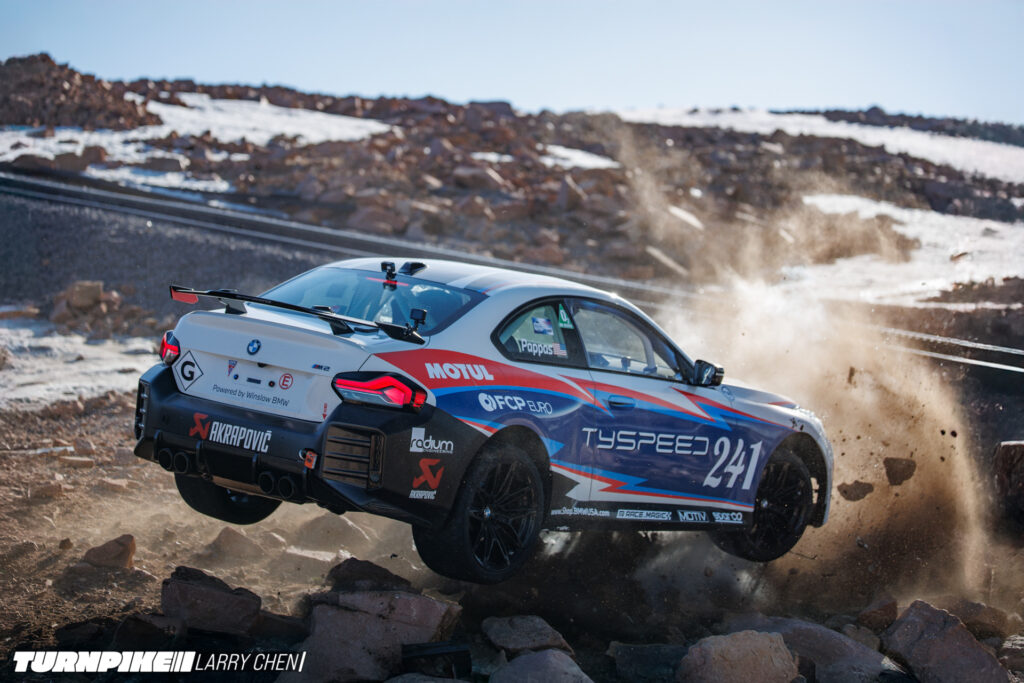
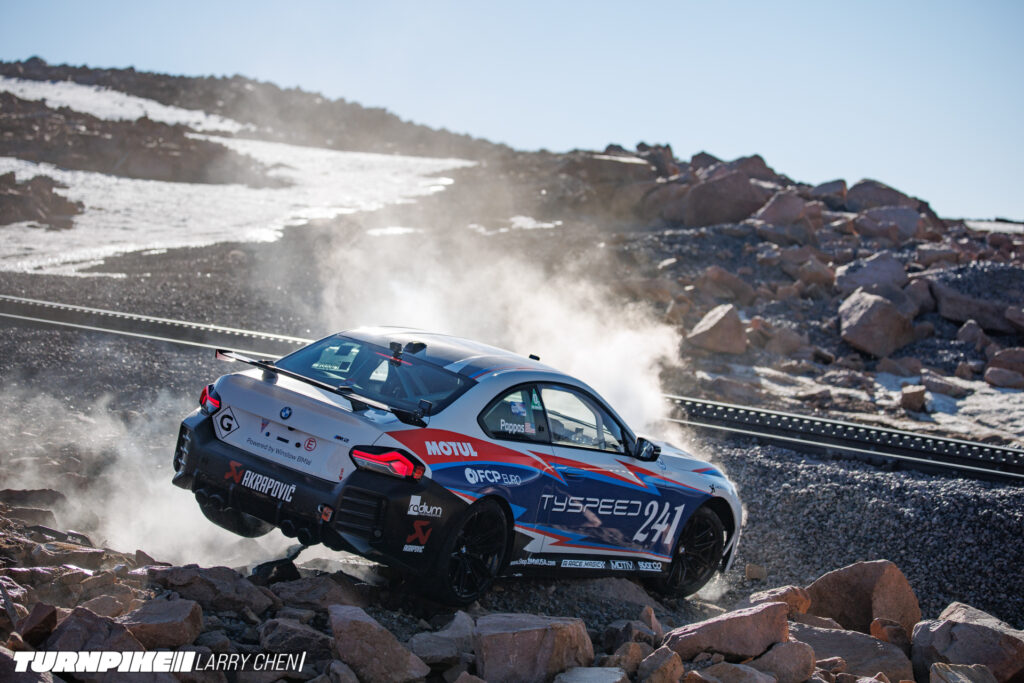
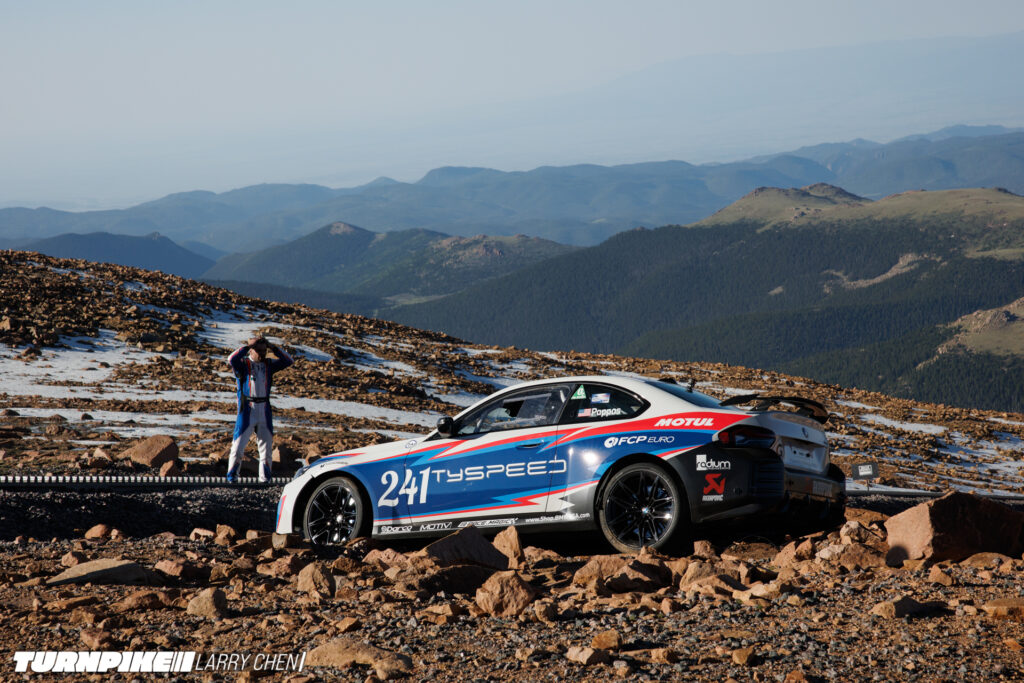
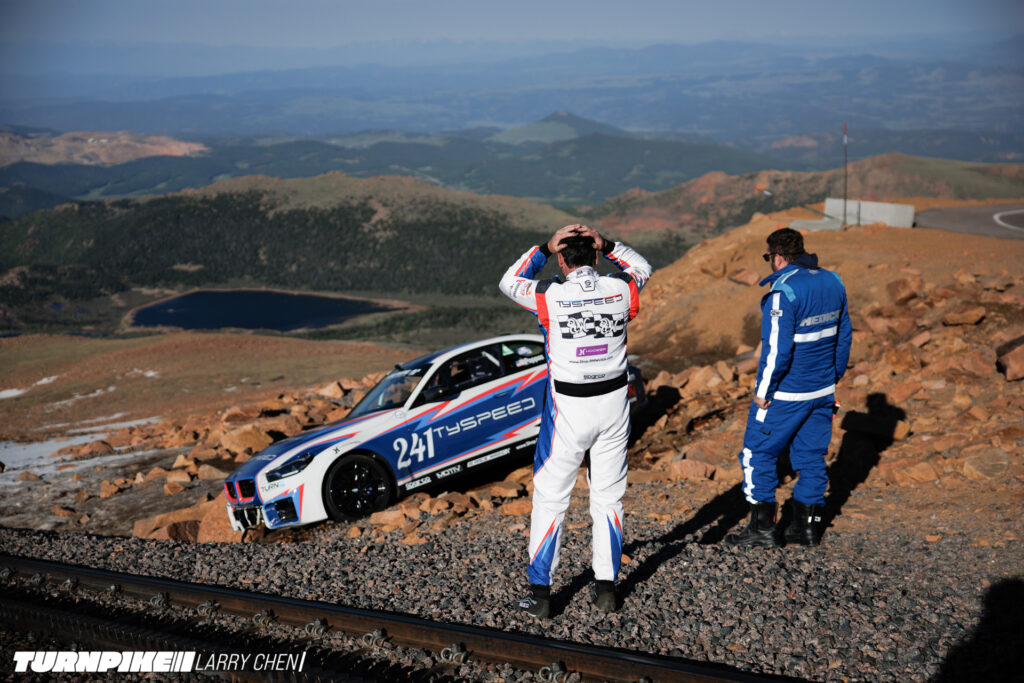
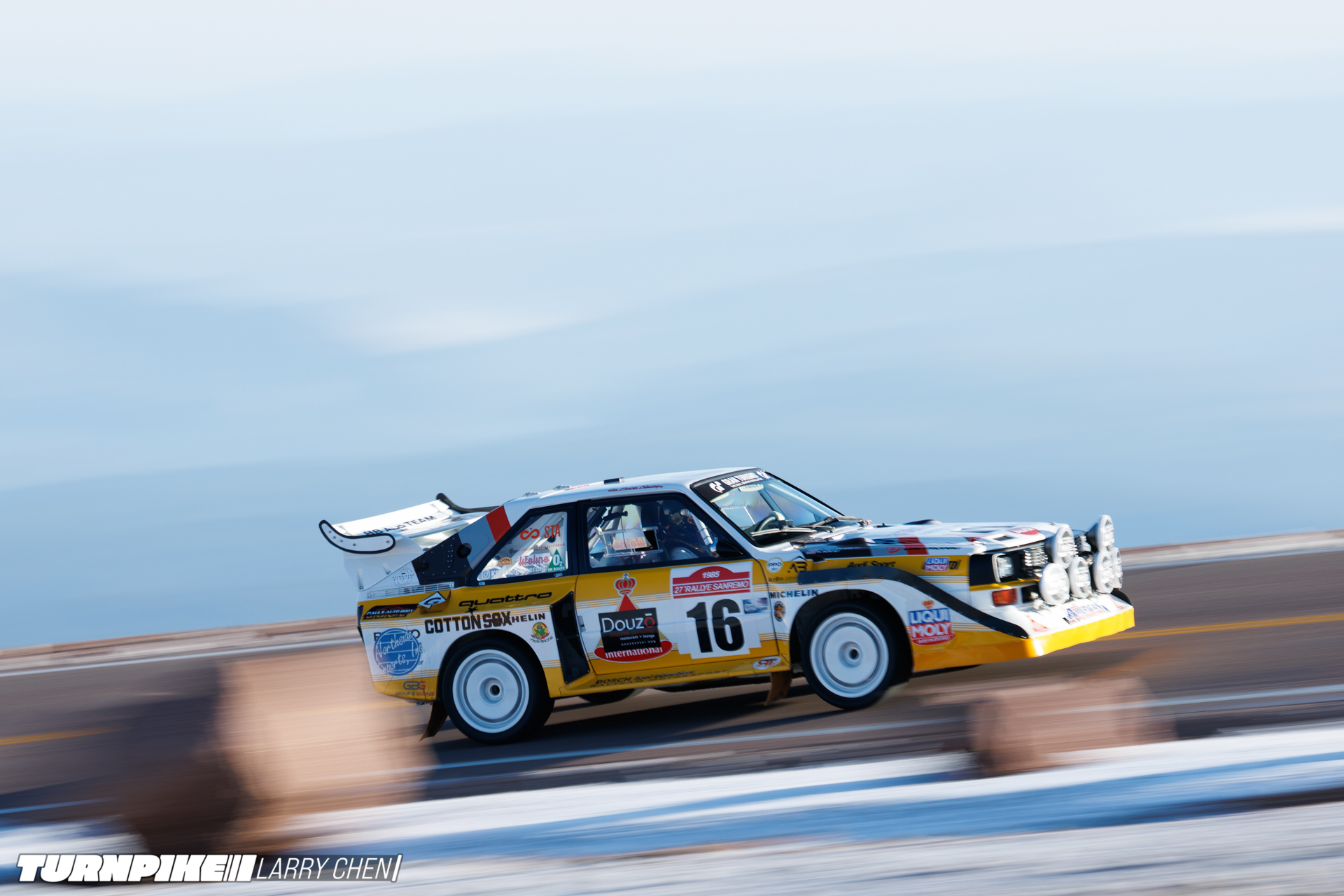

Watching Larry’s photos over the years have trickered an urge to shoot Pikes Peak at some point
This interview format seems dope, and the new format of the event was interesting and cool. If anything, I’d wish for a longer video; but I know its difficult in those conditions. Thank you so much Larry and Mario, I can’t wait for more on Turnpike!
Every photo to emerge from Pikes Peak, gives the impression it was taken on another world. Its a bucket-list drive for any enthusiast.
I also attended Pikes Peak in 2011. Almost got killed when the Monster aka Nobuhiro Tajima got a bit wide on a dirt corner.
https://flic.kr/p/8fvcZk
Heres a link to my album from the race: https://www.flickr.com/gp/causearuckus/10469UjRKb
What a fantastic location! One day I have to drive there as a participant of the race! Last time I was there with a rental car & the park officials were not that happy with my average speed ,-) 30mph is just too slow for European Standards up a hill ,-)
I was lucky enough to go watch the race in 2010, and I’m torn on it being fully paved. The dirt made the race more entertaining to watch and potholes. a more interesting challenge for the car builders… but on the other hand, I can now enjoy the full road in my own street car. I seem to remember the dirt being a bit potholed.
I request an edit feature for the comments, lol
agree, and maybe a “Like” feature as well.
It’s neat having this article to go alongside Larry’s video on YouTube
Great work and epic shots.
Deng, great photos as usual!